#apr 2004
Explore tagged Tumblr posts
Text
Bad Religion - Fuck Armageddon… This Is Hell
#Bad Religion#How Could Hell Be Any Worse?#Fuck Armageddon… This Is Hell#Format:#CD#Album#Reissue#Remastered#Country:#Australia#Released:#Apr 2004#Genre:#Rock#Style:#Melodic Hardcore#Punk#USA
9 notes
·
View notes
Photo
x

276 notes
·
View notes
Note
they have a point though. you wouldn't need everyone to accommodate you if you just lost weight, but you're too lazy to stick to a healthy diet and exercise. it's that simple. I'd like to see you back up your claims, but you have no proof. you have got to stop lying to yourselves and face the facts
Must I go through this again? Fine. FINE. You guys are working my nerves today. You want to talk about facing the facts? Let's face the fucking facts.
In 2022, the US market cap of the weight loss industry was $75 billion [1, 3]. In 2021, the global market cap of the weight loss industry was estimated at $224.27 billion [2].
In 2020, the market shrunk by about 25%, but rebounded and then some since then [1, 3] By 2030, the global weight loss industry is expected to be valued at $405.4 billion [2]. If diets really worked, this industry would fall overnight.
1. LaRosa, J. March 10, 2022. "U.S. Weight Loss Market Shrinks by 25% in 2020 with Pandemic, but Rebounds in 2021." Market Research Blog. 2. Staff. February 09, 2023. "[Latest] Global Weight Loss and Weight Management Market Size/Share Worth." Facts and Factors Research. 3. LaRosa, J. March 27, 2023. "U.S. Weight Loss Market Partially Recovers from the Pandemic." Market Research Blog.
Over 50 years of research conclusively demonstrates that virtually everyone who intentionally loses weight by manipulating their eating and exercise habits will regain the weight they lost within 3-5 years. And 75% will actually regain more weight than they lost [4].
4. Mann, T., Tomiyama, A.J., Westling, E., Lew, A.M., Samuels, B., Chatman, J. (2007). "Medicare’s Search For Effective Obesity Treatments: Diets Are Not The Answer." The American Psychologist, 62, 220-233. U.S. National Library of Medicine, Apr. 2007.
The annual odds of a fat person attaining a so-called “normal” weight and maintaining that for 5 years is approximately 1 in 1000 [5].
5. Fildes, A., Charlton, J., Rudisill, C., Littlejohns, P., Prevost, A.T., & Gulliford, M.C. (2015). “Probability of an Obese Person Attaining Normal Body Weight: Cohort Study Using Electronic Health Records.” American Journal of Public Health, July 16, 2015: e1–e6.
Doctors became so desperate that they resorted to amputating parts of the digestive tract (bariatric surgery) in the hopes that it might finally result in long-term weight-loss. Except that doesn’t work either. [6] And it turns out it causes death [7], addiction [8], malnutrition [9], and suicide [7].
6. Magro, Daniéla Oliviera, et al. “Long-Term Weight Regain after Gastric Bypass: A 5-Year Prospective Study - Obesity Surgery.” SpringerLink, 8 Apr. 2008. 7. Omalu, Bennet I, et al. “Death Rates and Causes of Death After Bariatric Surgery for Pennsylvania Residents, 1995 to 2004.” Jama Network, 1 Oct. 2007. 8. King, Wendy C., et al. “Prevalence of Alcohol Use Disorders Before and After Bariatric Surgery.” Jama Network, 20 June 2012. 9. Gletsu-Miller, Nana, and Breanne N. Wright. “Mineral Malnutrition Following Bariatric Surgery.” Advances In Nutrition: An International Review Journal, Sept. 2013.
Evidence suggests that repeatedly losing and gaining weight is linked to cardiovascular disease, stroke, diabetes and altered immune function [10].
10. Tomiyama, A Janet, et al. “Long‐term Effects of Dieting: Is Weight Loss Related to Health?” Social and Personality Psychology Compass, 6 July 2017.
Prescribed weight loss is the leading predictor of eating disorders [11].
11. Patton, GC, et al. “Onset of Adolescent Eating Disorders: Population Based Cohort Study over 3 Years.” BMJ (Clinical Research Ed.), 20 Mar. 1999.
The idea that “obesity” is unhealthy and can cause or exacerbate illnesses is a biased misrepresentation of the scientific literature that is informed more by bigotry than credible science [12].
12. Medvedyuk, Stella, et al. “Ideology, Obesity and the Social Determinants of Health: A Critical Analysis of the Obesity and Health Relationship” Taylor & Francis Online, 7 June 2017.
“Obesity” has no proven causative role in the onset of any chronic condition [13, 14] and its appearance may be a protective response to the onset of numerous chronic conditions generated from currently unknown causes [15, 16, 17, 18].
13. Kahn, BB, and JS Flier. “Obesity and Insulin Resistance.” The Journal of Clinical Investigation, Aug. 2000. 14. Cofield, Stacey S, et al. “Use of Causal Language in Observational Studies of Obesity and Nutrition.” Obesity Facts, 3 Dec. 2010. 15. Lavie, Carl J, et al. “Obesity and Cardiovascular Disease: Risk Factor, Paradox, and Impact of Weight Loss.” Journal of the American College of Cardiology, 26 May 2009. 16. Uretsky, Seth, et al. “Obesity Paradox in Patients with Hypertension and Coronary Artery Disease.” The American Journal of Medicine, Oct. 2007. 17. Mullen, John T, et al. “The Obesity Paradox: Body Mass Index and Outcomes in Patients Undergoing Nonbariatric General Surgery.” Annals of Surgery, July 2005. 18. Tseng, Chin-Hsiao. “Obesity Paradox: Differential Effects on Cancer and Noncancer Mortality in Patients with Type 2 Diabetes Mellitus.” Atherosclerosis, Jan. 2013.
Fatness was associated with only 1/3 the associated deaths that previous research estimated and being “overweight” conferred no increased risk at all, and may even be a protective factor against all-causes mortality relative to lower weight categories [19].
19. Flegal, Katherine M. “The Obesity Wars and the Education of a Researcher: A Personal Account.” Progress in Cardiovascular Diseases, 15 June 2021.
Studies have observed that about 30% of so-called “normal weight” people are “unhealthy” whereas about 50% of so-called “overweight” people are “healthy”. Thus, using the BMI as an indicator of health results in the misclassification of some 75 million people in the United States alone [20].
20. Rey-López, JP, et al. “The Prevalence of Metabolically Healthy Obesity: A Systematic Review and Critical Evaluation of the Definitions Used.” Obesity Reviews : An Official Journal of the International Association for the Study of Obesity, 15 Oct. 2014.
While epidemiologists use BMI to calculate national obesity rates (nearly 35% for adults and 18% for kids), the distinctions can be arbitrary. In 1998, the National Institutes of Health lowered the overweight threshold from 27.8 to 25—branding roughly 29 million Americans as fat overnight—to match international guidelines. But critics noted that those guidelines were drafted in part by the International Obesity Task Force, whose two principal funders were companies making weight loss drugs [21].
21. Butler, Kiera. “Why BMI Is a Big Fat Scam.” Mother Jones, 25 Aug. 2014.
Body size is largely determined by genetics [22].
22. Wardle, J. Carnell, C. Haworth, R. Plomin. “Evidence for a strong genetic influence on childhood adiposity despite the force of the obesogenic environment” American Journal of Clinical Nutrition Vol. 87, No. 2, Pages 398-404, February 2008.
Healthy lifestyle habits are associated with a significant decrease in mortality regardless of baseline body mass index [23].
23. Matheson, Eric M, et al. “Healthy Lifestyle Habits and Mortality in Overweight and Obese Individuals.” Journal of the American Board of Family Medicine : JABFM, U.S. National Library of Medicine, 25 Feb. 2012.
Weight stigma itself is deadly. Research shows that weight-based discrimination increases risk of death by 60% [24].
24. Sutin, Angela R., et al. “Weight Discrimination and Risk of Mortality .” Association for Psychological Science, 25 Sept. 2015.
Fat stigma in the medical establishment [25] and society at large arguably [26] kills more fat people than fat does [27, 28, 29].
25. Puhl, Rebecca, and Kelly D. Bronwell. “Bias, Discrimination, and Obesity.” Obesity Research, 6 Sept. 2012. 26. Engber, Daniel. “Glutton Intolerance: What If a War on Obesity Only Makes the Problem Worse?” Slate, 5 Oct. 2009. 27. Teachman, B. A., Gapinski, K. D., Brownell, K. D., Rawlins, M., & Jeyaram, S. (2003). Demonstrations of implicit anti-fat bias: The impact of providing causal information and evoking empathy. Health Psychology, 22(1), 68–78. 28. Chastain, Ragen. “So My Doctor Tried to Kill Me.” Dances With Fat, 15 Dec. 2009. 29. Sutin, Angelina R, Yannick Stephan, and Antonio Terraciano. “Weight Discrimination and Risk of Mortality.” Psychological Science, 26 Nov. 2015.
There's my "proof." Where is yours?
#inbox#fat liberation#fat acceptance#fat activism#anti fatness#anti fat bias#anti diet#resources#facts#weight science#save
13K notes
·
View notes
Text
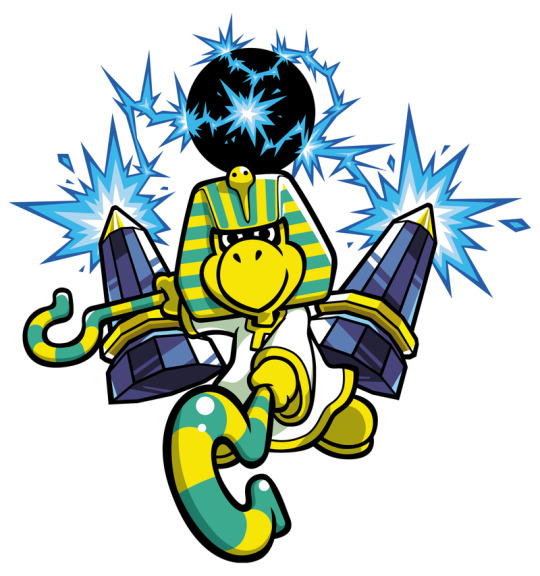
ok here's my timeline of egyptian koopa/king tut Notable Events, mostly to sate my own desire for one
AUG 2000: paper mario is released for the n64, debuting the character tutankoopa
SEPT 2002: adrian barritt & richard horrocks found fuse games (later renamed silverball studios)--not long thereafter, they pitch mario pinball land (aka super mario ball) to nintendo and are greenlit (source)
AUG 2004: mario pinball land launches in japan, followed by an autumn release elsewhere. the boss of its desert world--a pharaoh-themed koopa (video)--goes unnamed in the game. a page (author uncredited) on the official japanese promo guide site for pinball land calls it ボスノコノコ ("boss nokonoko", i.e. "boss koopa"--this follows a similar convention to the jp names for big bully, sunshine's wiggler, petey piranha, & others)

SEPT 2004: a walkthrough on gamefaqs by user qqwref refers to that boss as "tutankoopa"--afaict this is the first time anyone has publicly referred to this character by any name in english!
OCT 2004: a japanese licensed guidebook published by shogakukan (akiharu tsuchida et al) uses the name ファラオノコノコ ("pharaoh nokonoko", thus "pharaoh koopa"). everyone say thank you mariowiki for cataloguing the image. (i verified the book's release date via the final photo on this sale listing)

NOV 2004: nintendo power issue 185 features a mario pinball land guide (author uncredited, probably one of the names on this page) which refers to the boss as "egyptian koopa". note also the "piranha pete" error on the same page & the "spikey" error on the preceding page. the same month, a gamefaqs guide calls the boss "pharoe (sic) koopa troopa"
DEC 2004: (possibly earlier?) the american & australian mario pinball land promo flash pages (author uncredited) feature a(n unpreserved) video titled "king tut", presumably in reference to this boss:

JUL 2006: tutankoopa's mariowiki.com page is updated to add the claim that he is the boss in pinball land
AUG 2006: the first version of mario pinball land's mariowiki page calls the boss "tutankoopa"
some time before MAR 2007: the mario characters guide on gamefaqs by user spacepope4u conflates tutankoopa with the pinball land boss. sadly the version history is not very robust so i can't verify when this was added. references to the "egyptian koopa" name from np are also included:

MAY 2007: the first version of the boss's mariowiki page is created under the name "king tut" (probably taking the name from the site above, albeit without citing it). a revision the following day adds the name "koop tut" as well. around the same time, conflation of "king tut" with tutankoopa is removed from both the tutankoopa page and the pinball land page. the "king tut" name begins to gain traction
FEB 2008: "koop tut" is removed from the mariowiki page
DEC 2009: on the wiki's talk page two users very briefly discuss whether this character should be considered the same as tutankoopa
2012: silverball studios is bought by barnstorm games (source). not really relevant but i thought it was interesting
APR 2015: a "citation needed" template is added to the "king tut" page
NOV 2015: a thread is created on super mario boards to discuss the "king tut" name situation. the name of the wiki page is changed to "egyptian koopa", following the nintendo power name above. that name proliferates on other platforms, such as this beautiful forum thread:

SEPT 2019: a singular japanese deviantart user uploads fanart & refers to this character in the caption as ボスカメック ("boss kamek", thus "boss magikoopa"--notably, this is the jp name for kamella) as far as i can tell, literally nobody else has ever used this name for this character
OCT 2023: i post a video on the subject. lol
NOV 2023: warioware: move it is released: a microgame in 9-volt's stage, "mario pinball land", features an appearance by "egyptian koopa" (video). it continues to go unnamed
JUN 2025: the flash site from 2004 is rediscovered by mariowiki users: the page is renamed back to king tut in accordance with this new information
to recap the names that have been used, in the order of first extant public usage:
boss koopa (ボスノコノコ): comes from the official japanese guide site in 2004. a cursory search suggests that it's the most common name used on the japanese web (ex: pixiv, nintendo wiki, niconico, wikipedia, twitter)
tutankoopa: unofficial conflation of this boss with the paper mario character. earliest known recorded use is in the 2004 gamefaqs guide above. what the boss was called on mariowiki from 2006 to 2007. a variety of other sources have (possibly independently) furthered this conflation (ex: youtube (1, 2, 3), khinsider, gamefaqs (1, 2, forum), lemmy's land)
pharaoh koopa (ファラオノコノコ): comes from the licensed japanese shogakukan guidebook in 2004. appears in some of the "boss koopa" sources above, but only as a parenthetical. used only once in english in a fan guide, probably without referent
egyptian koopa: officially printed in nintendo power in 2004, used as the primary name on mariowiki from 2015 to 2025. widely used on the english web (ex: youtube (1, 2, 3, 4), deviantart, fandom.com, spriters resource, tvtropes)
king tut: featured on the official flash promo site in 2004. the name on mariowiki from 2007 to 2015, and again as of june 2025. can be seen online in some sources from 2015 and earlier (ex. fantendo, giantbomb, blogspot, datacrystal, youtube)
koop tut: unofficial, appeared in the body of the mariowiki page from 2007 to 2008. may have been pulled from a super show episode. not used anywhere else afaict
boss magikoopa (ボスカメック): unofficial, used by a single deviantart user in 2019
68 notes
·
View notes
Text
It’s so amusing to me when characters within comics use the fun-trivia-for-fans maps. Like technically that’s a perfectly good canon map. But when Jim Gordon uses it he feels like a tourist to me.
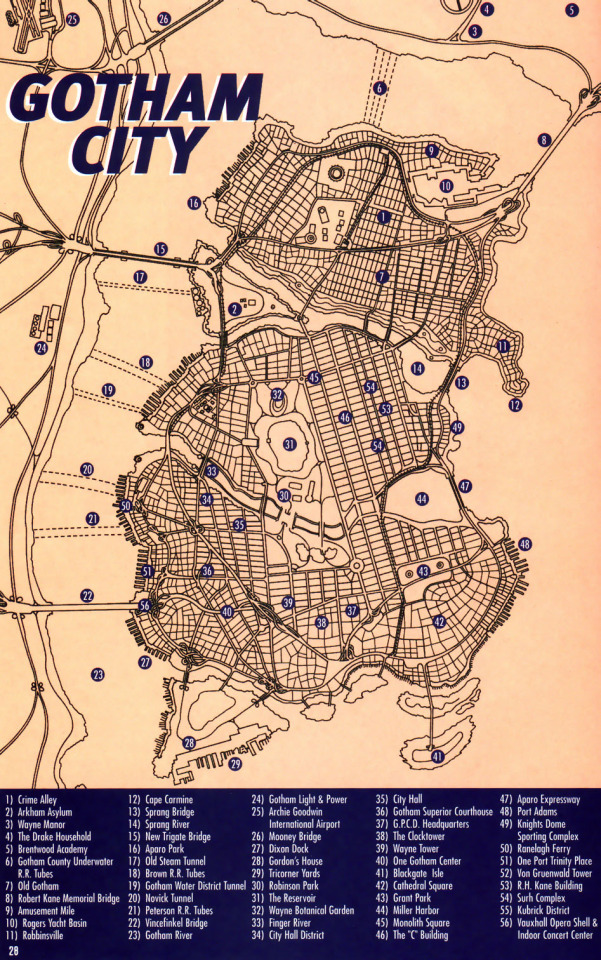
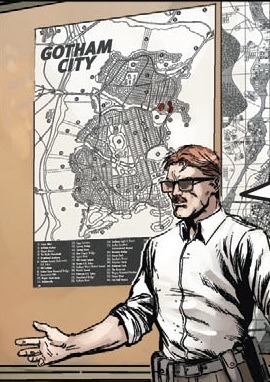
Eliot Brown’s map from Batman: Gotham City Secret Files & Origins #1 (Apr 2000), in Commissioner Loeb’s office in Detective Comics Vol. 2 #25 (Jan 2014)
It’s more funny when it’s shown on a computer though. You’re telling me Oracle and Batman have super highly sophisticated computers but the maps of Gotham on those computers use a numbered legend, instead of anything more technologically efficient and helpful?
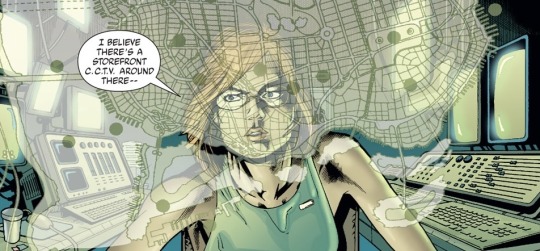
Batman: Gotham Knights #55 (Sep 2004) — how is she supposed to find the CCTV if it’s not on the legend? :( lol

Batman Vol. 1 #683 (Jan 2008)

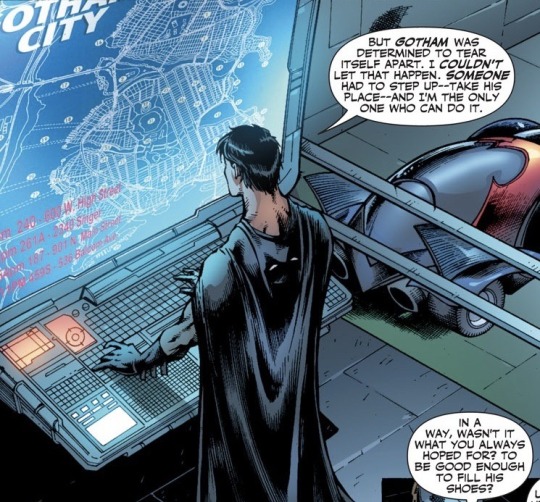
Robin Vol. 2 #178 (Nov 2008) / Titans Vol. 2 #15 (Sep 2009)
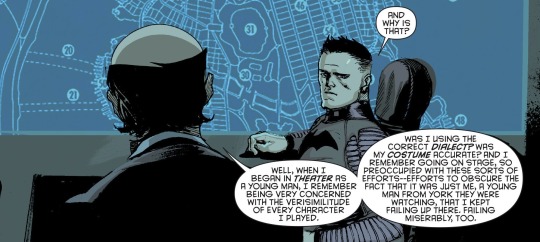
Batman Vol. 2 #24 (Dec 2013)
Absurd. And hilarious. This is a very ineffective map for them to quickly identify deep details of the terrain. But it IS an effective way to get me to laugh in the middle of a comic intended to be high stakes and serious. Important mission who? I only know fun background map.
#you see it’s actually very important for GCPD to know where Brentwood Academy is. that’s why it’s on the map. not bc fans want to know. 👍#wdym it might not even be in their jurisdiction and how come no other school is on there? it can’t be because Tim was attending it in 2000…#batman#batfam#dc comics#gotham city#dcu geography#heroesriseandfall#bruce wayne#barbara gordon#jim gordon
675 notes
·
View notes
Text
⋆ˊˎ-•̩̩͙- *̩̩̥͙ WHAT'S A GIRL GOTTA DO, A DIAMOND'S GOTTA SHINE... home reality intro!!



┊ ➶ 。˚ ° liliana amore evans [born sept. 10, 2004] is a world famous singer-songwriter, twitch streamer & actress. i was born in new orleans, louisiana to actor christopher robert "chris" evans & [redacted] as the 4th of six children and i am the goddaughter of scarlett ingrid johansson & anthony dwane mackie. i first started my career at just 7 years old first appearing on the showtime series shameless as maisie gallagher. at 14 years old i began streaming on twitch as a way to connect with my fans and it was during one of those streams that i announced the release of my debut album teenage dream. since childhood, i've been best friends with reneé mary jane rapp and we're constantly appearing on each other's instagram & tiktoks. she even sometimes joins my streams along with louis.

┊ ➶ 。˚ ° my filmography
tv shows:
༉‧₊˚. shameless ; maisie gallagher (2011-2021)
༉‧₊˚. grimm (1ep) ; april granger (2012)
༉‧₊˚. stranger things ; isabella "bella" cassidy (2016-?)
༉‧₊˚. a million little things ; sophie dixon (2018-2023)
༉‧₊˚. pretty little liars ; imogen adams (2022-?)
༉‧₊˚. bridgerton ; hyacinth bridgerton (2020-?)
music videos:
༉‧₊˚. mean ; taylor swift
༉‧₊˚. that's not how this works (feat. dan + shay) ; charlie puth
movies:
༉‧₊˚. the greatest showman ; caroline barnum (2017)
༉‧₊˚. godzilla: king of the monsters ; madison russell (2019)
༉‧₊˚. godzilla vs. kong ; madison russell (2021)
༉‧₊˚. all too well: the short film ; her (2021)
༉‧₊˚. scream ; freya tatum riley, dewey & gale's daughter (2022)
༉‧₊˚. scream vi ; freya riley (2023)
༉‧₊˚. damsel ; princess elodie (2024)
༉‧₊˚. nosferatu ; ellen hutter (2024)

┊ ➶ 。˚ ° my discography
༉‧₊˚. sweet angel [released dec. 3, 2020]
༉‧₊˚. divine feminine [released feb. 19, 2022]
༉‧₊˚. that's not how this works (feat. dan + shay & liliana evans) [released apr. 14, 2023]
༉‧₊˚. what was i made for? [released jul. 13, 2023]
༉‧₊˚. can't catch me now [released nov. 3, 2023]
༉‧₊˚. yours, never [released nov. 23, 2023]
༉‧₊˚. yours, never (deluxe) [released feb. 17, 2024]
༉‧₊˚. kisses at sunrise [released aug. 23, 2024]
༉‧₊˚. snowfall (christmas ep) [releases on dec. 25, 2024]
༉‧₊˚. kisses at sunrise (deluxe) [releases on feb. 14, 2025]
༉‧₊˚. mrs. [releases sometime between jan. 1-apr. 30, 2026]



┊ ➶ 。˚ ° my family
༉‧₊˚. christopher robert "chris" evans [born jun. 13, 1977] is a world famous american actor. he was born in boston, massachussetts as the oldest of 5 children. he's most known for his role as steve rogers / captain america. when he was 13, his family moved to shreveport, louisiana where he met [redacted], who he immediately fell in love with. the two began dating at 15 years old and they got married in late 1996. shortly after their wedding, they moved to new orleans, louisiana and together they had 6 children including corbyn evans, liliana evans & walker evans.
༉‧₊˚. taylor alison evans [born dec. 13, 1989], known professionally as taylor swift, is a world famous singer-songwriter. she was born in west reading, pennsylvania as the youngest of 5 children. she began writing songs at just 11 years old and is one of the biggest inspirations for her niece, liliana evans.
༉‧₊˚. corbyn matthew evans [born oct. 4, 1998] is a famous singer-songwriter and former member of the band, why don't we. he was born in new orleans, louisiana to actor christopher robert evans & [redacted] as the first of 6 children alongside his twin sister [redacted].
༉‧₊˚. walker lee evans [born jan. 5, 2009] is an actor. he was born in new orleans, louisiana to actor christopher robert evans & [redacted] as the youngest of 6 children. out of all of his siblings, he is the closest to liliana.



┊ ➶ 。˚ ° aaron perry johnson [born jun. 13, 1990] is a world famous english actor. he was born in high wycombe, england. his father left him & his mother when he was 2. when he was 4, his mother met a mexican man from guadalajara who aaron considers as his dad. his mother & the man got married after 3 years of dating and 11 months later, his younger half-sister gemma araceli flores was born. he is perfectly fluent in spanish & russian. i first met aaron on the set of percy jackson & the olympians while visiting my younger brother, walker, and i met him for the second time while filming nosferatu, where we became friends and he helped me break up with my shitty ex-boyfriend, asher ellis. he, along with reneé & louis, helped me get over my break up with asher and overtime we became closer. in late april 2024, we began going on dates but it wasn't until jun. 17 that we became official. we moved in together on oct. 13, 2024.



┊ ➶ 。˚ ° my past relationships
༉‧₊˚. louis patrick james patridge [born jun. 3, 2003] is a famous english actor. he was born in london, england. he began acting as a young child. we first met when i was 13 years old and dated from jun. 28-jul. 21, 2019. we broke up because we knew we were far better off as friends and he's one of my best friends to this day. me, him & reneé are a very well-known trio. i even helped him get together with olivia.
༉‧₊˚. anna cathcart [born jun. 16, 2003] is a famous canadian actress. she was born in vancouver, canada. she's most known for her role as kitty song-covey. we first met in march of 2019 and began dating on oct. 11, 2019. we dated for nearly two years before breaking up on sept. 23, 2021 because we realized we'd both lost feelings for each other. we still speak from time to time and are on good terms.
༉‧₊˚. asher roman ellis [born may 6, 1996] is a famous singer-songwriter. he was born in dallas, texas. he began releasing music at 14 years old but didn't make his rise to fame until releasing his 2nd album in 2017. he appeared on the song my oh my in my 2nd album divine feminine and that's how we met. i quickly fell in love with him and we got together on apr. 19, 2022. for the first 6 months, he treated me perfectly but slowly he started acting differently, becoming verbally abusive and cheating on me without me knowing. it only got worse after i met aaron and asher tried demanding that i stop speaking to him but i refused. finally, on may 27, 2023 i broke up with him and moved in with renee.

#*ੈ✩‧₊˚ liliesmultiverse#permashifters#permashifter#permashifting#shifting for aaron johnson#aaron johnson shifting#reality shifting#shifting realities#shiftblr#shifters#shifting#anti shifters dni#desired reality#reality shift#reality shifter#shifting community#shift#shifter#shifting blog#shifting reality#shifting antis dni#shifting motivation#shiftingrealities#realityshifting
75 notes
·
View notes
Text

Union Plaza Hotel & Casino, July 1971
The hotel was built on the site of the former Union Pacific depot and Greyhound bus terminal. Two companies financed the hotel: Upland Industries, a subsidiary of Union Pacific Corp, and Scott Corp. directed by Frank E. Scott. The Scott Corp. was the landlord, Scott was the CEO and president of the hotel, with partners Sen. Howard Cannon, and downtown casino stalwarts J.K. Houssels Jr, Jackie Gaughan, Sam Boyd, and Bill Boyd, who managed the “world’s largest casino.”
'70: Aug. 10, Groundbreaking. (LA Times 8/9/70, RJ 7/1/71)
'70: Nov., Union Station demolished. (RJ 11/24/70)
'71: May 2, Final UP train service. Amtrak was established, and passenger service through Las Vegas is suspended.
'71: Jul. 2, Union Plaza Hotel & Casino is opened. Architects: Zick & Sharp (Las Vegas) in association with Stanley J. How (Omaha). Contractor: Blount-Yoxen Construction Co. The hotel complex contained a bus station, 500-seat showroom, 2nd story pool in front of the hotel, and an adjacent parking garage. The 504-room hotel was roughly the same size as the Fremont Hotel and smaller than some on the Strip. Union Plaza claimed "the world's largest casino" as 66,000 sq. ft.
'75: Jul., Sports book addition. KDWN Radio 720 AM begins broadcasting from the hotel with a station on the 2nd floor.
'79: Oct. 28, Amtrak’s Desert Wind line through Las Vegas begins the first regularly scheduled service since ‘71. Small room and platform in the rear of the hotel is used as the depot.
'81: Apr., Rooftop sign and lights changed. Design by Charles Barnard, Ad Art.
'82: Construction of 26-story south tower, and conversion of the front pool to restaurant designed by Louis Pereira. (RJ 3/16/82, 9/19/82, 10/28/82)
'83: Center Stage restaurant opens in Jan. (RJ 1/23/83) Mural depicting the past, present, and future of passenger rail service created in the hotel between the lobby and depot area. Tower topped off in Apr. and opened in fall. Total rooms: 1030. (RJ 4/23/83, 10/20/83)
'90-'93: Jackie Gaughan acquires the holdings of Union Plaza founder Frank Scott, followed by Upland’s participation in '93, becoming the majority shareholder and ending the relationship with Union Pacific. The hotel is renamed “Jackie Gaughan’s Plaza” circa ’92, though the signs remain unchanged, with “Union” on the rooftop sign for several years.
2004: Mar. 26, Plaza is sold. Union Plaza Hotel & Casino Inc, Exber Inc and Gaughan South sell Plaza, Las Vegas Club, Gold Spike, Western Hotel, and 60 acres of land and non-gaming properties to Barrick Gaming and Tamares Real Estate for $82M. The Barrick group plans a "themed street behind the Plaza which will re-create the ambience of old downtown Las Vegas." (RJ 3/26/2004)
2005: Tamares buys Barrick’s interest in Plaza hotel and the Las Vegas properties; Larry Woolf managing.
2009: Firefly opens in the former Center Stage restaurant; Oscar's Steakhouse opens in its place in 2011.
2014: Jonathan Jossel takes over as the CEO of the Plaza, the youngest non-restricted gaming licensees in Las Vegas.


Construction in 1971. The first photo is dated 1/12/1971, Nevada State Museum Las Vegas.

Fremont & Casino Center, Apr. 1971. Union Plaza construction past Main St.

Sal Sagev Hotel and Golden Gate Casino; Union Plaza; Las Vegas Club and the Dugout restaurant. 1971. Photo via Plaza Hotel.
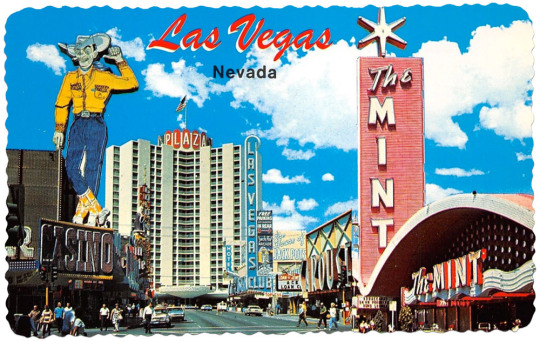

Postcards circa 1971.

Postcard c. '83 or later. New tower, new rooftop sign, and the Center Stage Restaurant.
Timeline Sources: UP Hotel Plans Ready for Signing. Las Vegas Review-Journal, 10/3/69; Work on 22-story hotel to start soon. Review-Journal, 8/2/70 p1; No Parking Here. Review-Journal, 8/10/70; Union Plaza Magic Hour Near. Review-Journal, 7/1/71; Plaza celebrates LV ‘uptown’. Review-Journal, 8/13/71; Rod Smith. Four Gaughan casinos pass to Barrick. Review-Journal, 3/26/2004; Howard Stutz. Lady Luck. Review-Journal, 12/13/2005; Oliver Lovat. A Golden Age for Downtown. GGB Magazine, 2021.
59 notes
·
View notes
Text
The true post-cyberpunk hero is a noir forensic accountant

I'm touring my new, nationally bestselling novel The Bezzle! Catch me in TOMORROW (Apr 17) in CHICAGO, then Torino (Apr 21) Marin County (Apr 27), Winnipeg (May 2), Calgary (May 3), Vancouver (May 4), and beyond!

I was reared on cyberpunk fiction, I ended up spending 25 years at my EFF day-job working at the weird edge of tech and human rights, even as I wrote sf that tried to fuse my love of cyberpunk with my urgent, lifelong struggle over who computers do things for and who they do them to.
That makes me an official "post-cyberpunk" writer (TM). Don't take my word for it: I'm in the canon:
https://tachyonpublications.com/product/rewired-the-post-cyberpunk-anthology-2/
One of the editors of that "post-cyberpunk" anthology was John Kessel, who is, not coincidentally, the first writer to expose me to the power of literary criticism to change the way I felt about a novel, both as a writer and a reader:
https://locusmag.com/2012/05/cory-doctorow-a-prose-by-any-other-name/
It was Kessel's 2004 Foundation essay, "Creating the Innocent Killer: Ender's Game, Intention, and Morality," that helped me understand litcrit. Kessel expertly surfaces the subtext of Card's Ender's Game and connects it to Card's politics. In so doing, he completely reframed how I felt about a book I'd read several times and had considered a favorite:
https://johnjosephkessel.wixsite.com/kessel-website/creating-the-innocent-killer
This is a head-spinning experience for a reader, but it's even wilder to experience it as a writer. Thankfully, the majority of literary criticism about my work has been positive, but even then, discovering something that's clearly present in one of my novels, but which I didn't consciously include, is a (very pleasant!) mind-fuck.
A recent example: Blair Fix's review of my 2023 novel Red Team Blues which he calls "an anti-finance finance thriller":
https://economicsfromthetopdown.com/2023/05/13/red-team-blues-cory-doctorows-anti-finance-thriller/
Fix – a radical economist – perfectly captures the correspondence between my hero, the forensic accountant Martin Hench, and the heroes of noir detective novels. Namely, that a noir detective is a kind of unlicensed policeman, going to the places the cops can't go, asking the questions the cops can't ask, and thus solving the crimes the cops can't solve. What makes this noir is what happens next: the private dick realizes that these were places the cops didn't want to go, questions the cops didn't want to ask and crimes the cops didn't want to solve ("It's Chinatown, Jake").
Marty Hench – a forensic accountant who finds the money that has been disappeared through the cells in cleverly constructed spreadsheets – is an unlicensed tax inspector. He's finding the money the IRS can't find – only to be reminded, time and again, that this is money the IRS chooses not to find.
This is how the tax authorities work, after all. Anyone who followed the coverage of the big finance leaks knows that the most shocking revelation they contain is how stupid the ruses of the ultra-wealthy are. The IRS could prevent that tax-fraud, they just choose not to. Not for nothing, I call the Martin Hench books "Panama Papers fanfic."
I've read plenty of noir fiction and I'm a long-term finance-leaks obsessive, but until I read Fix's article, it never occurred to me that a forensic accountant was actually squarely within the noir tradition. Hench's perfect noir fit is either a happy accident or the result of a subconscious intuition that I didn't know I had until Fix put his finger on it.
The second Hench novel is The Bezzle. It's been out since February, and I'm still touring with it (Chicago tonight! Then Turin, Marin County, Winnipeg, Calgary, Vancouver, etc). It's paying off – the book's a national bestseller.
Writing in his newsletter, Henry Farrell connects Fix's observation to one of his own, about the nature of "hackers" and their role in cyberpunk (and post-cyberpunk) fiction:
https://www.programmablemutter.com/p/the-accountant-as-cyberpunk-hero
Farrell cites Bruce Schneier's 2023 book, A Hacker’s Mind: How the Powerful Bend Society’s Rules and How to Bend Them Back:
https://pluralistic.net/2023/02/06/trickster-makes-the-world/
Schneier, a security expert, broadens the category of "hacker" to include anyone who studies systems with an eye to finding and exploiting their defects. Under this definition, the more fearsome hackers are "working for a hedge fund, finding a loophole in financial regulations that lets her siphon extra profits out of the system." Hackers work in corporate offices, or as government lobbyists.
As Henry says, hacking isn't intrinsically countercultural ("Most of the hacking you might care about is done by boring seeming people in boring seeming clothes"). Hacking reinforces – rather than undermining power asymmetries ("The rich have far more resources to figure out how to gimmick the rules"). We are mostly not the hackers – we are the hacked.
For Henry, Marty Hench is a hacker (the rare hacker that works for the good guys), even though "he doesn’t wear mirrorshades or get wasted chatting to bartenders with Soviet military-surplus mechanical arms." He's a gun for hire, that most traditional of cyberpunk heroes, and while he doesn't stand against the system, he's not for it, either.
Henry's pinning down something I've been circling around for nearly 30 years: the idea that though "the street finds its own use for things," Wall Street and Madison Avenue are among the streets that might find those uses:
https://craphound.com/nonfic/street.html
Henry also connects Martin Hench to Marcus Yallow, the hero of my YA Little Brother series. I have tried to make this connection myself, opining that while Marcus is a character who is fighting to save an internet that he loves, Marty is living in the ashes of the internet he lost:
https://pluralistic.net/2023/05/07/dont-curb-your-enthusiasm/
But Henry's Marty-as-hacker notion surfaces a far more interesting connection between the two characters. Marcus is a vehicle for conveying the excitement and power of hacking to young readers, while Marty is a vessel for older readers who know the stark terror of being hacked, by the sadistic wolves who're coming for all of us:
https://www.youtube.com/watch?v=I44L1pzi4gk
Both Marcus and Marty are explainers, as am I. Some people say that exposition makes for bad narrative. Those people are wrong:
https://maryrobinettekowal.com/journal/my-favorite-bit/my-favorite-bit-cory-doctorow-talks-about-the-bezzle/
"Explaining" makes for great fiction. As Maria Farrell writes in her Crooked Timber review of The Bezzle, the secret sauce of some of the best novels is "information about how things work. Things like locks, rifles, security systems":
https://crookedtimber.org/2024/03/06/the-bezzle/
Where these things are integrated into the story's "reason and urgency," they become "specialist knowledge [that] cuts new paths to move through the world." Hacking, in other words.
This is a theme Paul Di Filippo picked up on in his review of The Bezzle for Locus:
https://locusmag.com/2024/04/paul-di-filippo-reviews-the-bezzle-by-cory-doctorow/
Heinlein was always known—and always came across in his writings—as The Man Who Knew How the World Worked. Doctorow delivers the same sense of putting yourself in the hands of a fellow who has peered behind Oz’s curtain. When he fills you in lucidly about some arcane bit of economics or computer tech or social media scam, you feel, first, that you understand it completely and, second, that you can trust Doctorow’s analysis and insights.
Knowledge is power, and so expository fiction that delivers news you can use is novel that makes you more powerful – powerful enough to resist the hackers who want to hack you.
Henry and I were both friends of Aaron Swartz, and the Little Brother books are closely connected to Aaron, who helped me with Homeland, the second volume, and wrote a great afterword for it (Schneier wrote an afterword for the first book). That book – and Aaron's afterword – has radicalized a gratifying number of principled technologists. I know, because I meet them when I tour, and because they send me emails. I like to think that these hackers are part of Aaron's legacy.
Henry argues that the Hench books are "purpose-designed to inspire a thousand Max Schrems – people who are probably past their teenage years, have some grounding in the relevant professions, and really want to see things change."
(Schrems is the Austrian privacy activist who, as a law student, set in motion the events that led to the passage of the EU's General Data Privacy Regulation:)
https://pluralistic.net/2020/05/15/out-here-everything-hurts/#noyb
Henry points out that William Gibson's Neuromancer doesn't mention the word "internet" – rather, Gibson coined the term cyberspace, which, as Henry says, is "more ‘capitalism’ than ‘computerized information'… If you really want to penetrate the system, you need to really grasp what money is and what it does."
Maria also wrote one of my all-time favorite reviews of Red Team Blues, also for Crooked Timber:
https://crookedtimber.org/2023/05/11/when-crypto-meant-cryptography/
In it, she compares Hench to Dickens' Bleak House, but for the modern tech world:
You put the book down feeling it’s not just a fascinating, enjoyable novel, but a document of how Silicon Valley’s very own 1% live and a teeming, energy-emitting snapshot of a critical moment on Earth.
All my life, I've written to find out what's going on in my own head. It's a remarkably effective technique. But it's only recently that I've come to appreciate that reading what other people write about my writing can reveal things that I can't see.

If you'd like an essay-formatted version of this post to read or share, here's a link to it on pluralistic.net, my surveillance-free, ad-free, tracker-free blog:
https://pluralistic.net/2024/04/17/panama-papers-fanfic/#the-1337est-h4x0rs

Image: Frédéric Poirot (modified) https://www.flickr.com/photos/fredarmitage/1057613629 CC BY-SA 2.0 https://creativecommons.org/licenses/by-sa/2.0/
#pluralistic#science fiction#cyberpunk#literary criticism#maria farrell#henry farrell#noir#martin hench#marty hench#red team blues#the bezzle#forensic accountants#hackers#bruce schneier#post-cyberpunk#blair fix
208 notes
·
View notes
Text
Bad Religion - American Dream
#Bad Religion#How Could Hell Be Any Worse?#American Dream#Format:#CD#Album#Reissue#Remastered#Country:#Australia#Released:#Apr 2004#Genre:#Rock#Style:#Melodic Hardcore#Punk#USA
5 notes
·
View notes
Text
MCU Timeline: The Incredible Hulk
This timeline is based on dates from the movie, its deleted scenes, calculations and logic, and not on Fury's Big Week (see the reason here). I must admit that compared to the other movies I've covered, this one gave me a bit of a headache.
~1946 - Thaddeus E. Ross is born.
December 18, 1969 - Robert Bruce Banner is born.

~1970 - Emil Blonsky is born.

~1973 - Ross returns from Vietnam at the age of 27.
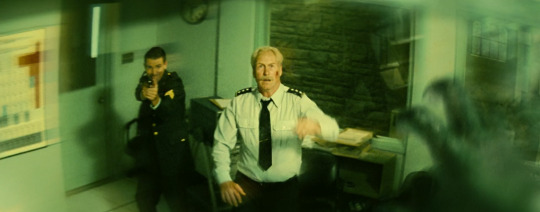
March 5, 2004, 2:30 pm - experiment by Dr. Banner and Dr. Betty Ross turns Bruce into the Hulk. He kills two scientists, a military officer, and injures General Ross and his daughter.


In the newspaper we can see part of the date "06". The most logical option would be "2006", but this contradicts other dates, plus Marvel often blurs or skips years in their newspapers. The next option is - day. We can't see the month, but there is another paper connected to it that says "March 07". So I assume the original incident happened on March 5 (the day before this newspaper was published).
~March 6 or 7, 2004 at 2:50 pm - Bruce visits Betty in the hospital. General Ross confronts him. Bruce runs away. Ross begins his hunting campaign.

April 18, 2004 - Banner is spotted by a surveillance camera.
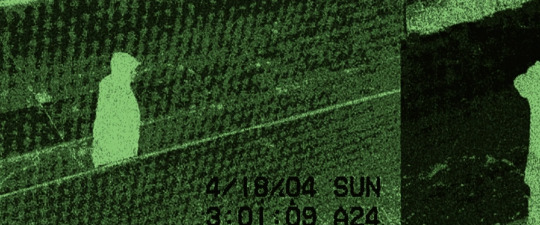
This is a US surveillance camera (date format), meaning it happened while Bruce was hiding inside the country (thus shortly after the original incident).
2004-2006 - Banner spotted in Idaho. Hulk kills a state trooper.

Here I would guess that the suicide attempt in Alaska from the deleted alternate opening scene took place in the winter of 2004-2005 or 2005-2006. And it wasn't the suicide attempt Banner was talking about in The Avengers, because he didn't put a bullet in his mouth in the deleted scene. Instead, he aimed at the ice so it would break and drag him out to the sea, I guess. So officially he's attempted suicide at least twice, and the bullet-in-mouth was before that ice-cold-one (it doesn't make sense to put so much effort into attempting suicide if you haven't tried all the easier options. And I'm sure he tried them).

February 7, 2006 - Banner attempted contact with Betty Ross.

May 27-28, 2006 - Bruce/Hulk spotted in Canada. Hulk (possibly) kills two Canadian hunters.
September 4, 2006 - Hulk out with house demolition. Probably still in Canada.

Not sure why "Notification: MOSSAD": this doesn’t look like Israel at all. But perhaps after this incident Bruce flew from Canada to Israel, and then from there went to Europe.
October 21, 2006 - "last seen fleeing".

This "No Sightings For 5 Months" contradicts October 21, 2006, because there were events a month before and after that date. And that's okay, because it doesn't actually mean that that line has to have any connection to that specific date. It just means that Ross lost him for 5 months during his hunt, and it's just part of a larger report, most of which we don't see.
November-December 2006 (snow) - Hulk smashes trucks in Europe (European license plate).

January 22, 2007 - Hulk out in Samara, Russia.
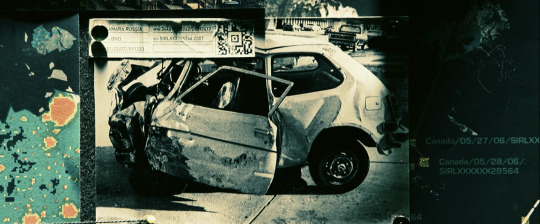
2007-2008 - Bruce in a Tibetan monastery.
March 2009 - Bruce is hired to work at the Antonio Carlos soda bottling plant in Rio (Rocinha favela), Brazil.

So his path most likely looked like this: US (Virginia > Idaho) > crossed US/Canada border > Alaska > back to Canada > Israel > Central Europe > Russia > China (Tibet) > Japan > South America (Paraguay > Brazil).
5 years after initial incident (2004-2009):

~August 2, 2009, 158 days after the last incident:
Banner cuts his finger at the plant and a bottle of soda containing his blood is shipped to the US.


Here on the sticker we see "19 APR". At this quality I can't really see what that date means, but I'm guessing it's a bottling or shipping date. So in the movie it must be April 19th, right? But if we use that date, other dates won't work (especially the last scenes in Canada). Instead, I'll use secondary evidence like the weather and college students later in the movie (doesn't look like summer, does it?) to determine an approximate date, and ignore "19 APR".

Note: This weather forecast matches August 2009 in Rio, but not April.
He tries the mysterious flower on his blood cells, but it's just another failed attempt to cure himself of the Hulk. He sends a sample of his blood to Dr. Samuel Sterns.
~30 days later - Stan Lee in Wisconsin drinks the bottle with Banner's blood.
Shortly after, ~September 2, 8:10 pm - General Ross learns of this and sends his men to search for Banner.

~September 3 (190 days without incident):
Ross has assembled a special forces team to capture Bruce, led by Emil Blonsky. They are sent to Brazil immediately.

Same day in Brazil - Sterns informs Bruce that he has succeeded in reducing the gamma radiation levels in Banner's blood sample.

~September 4, early morning - Ross' team tries to catch Bruce. He hulks out and escapes.
~September 8:
Morning - Bruce returns to himself in Guatemala, thousands of miles from Rio.

Why ~4 days later and not 1: Hulk's running speed in the MCU is about 100 km/h. The distance between Rio and Guatemala that he had to run is ~7 thousand km. I doubt he ran at the same speed the whole distance, so that gives us at least 3-4 days.
(Probably) same day, evening - Bruce in Chiapas, Mexico.
~September 24:
10:40 am - Bruce arrives at Culver University but can't get inside.

Note: there are too many students for summer, and some are wearing sweaters and jackets. All this tells us that it is most likely September.
Night - he visits his old friend Stan.
~September 25 (Friday):
Bruce gains access to the university database, but finds that all of his data has disappeared.
Bruce and Betty meet. She hides him at her house (or rather at her boyfriend's house, according to deleted scenes) and gives him the data she saved.

Betty mentions that it's Friday, and in this movie the days of the week match our universe, unlike Iron Man 1 where they don't. I'll make another post explaining why there's such a difference between the movies, rather than just calling it a mistake.
Blonsky gets an injection of super soldier serum.
~September 26 - General Ross attacks Bruce at Culver University. Bruce hulks out, badly injures Blonsky, saves Betty and runs away with her. They spend the night in a cave.
Note that some trees in the scene are already changing colors to yellow and red, which usually starts in mid-September.
~September 27 - Hulk in. Betty takes Bruce to a motel. Blonsky is healed of all his injuries.
~September 28:
Bruce sends the data to Sterns. He and Betty drive to NYC. Blonsky gets a second injection.

Here we can see "06.12.08", but: 1) it contradicts other dates; 2) the time +0004 does not match the time Bruce sent the message (it was daytime, not 00:04); 3) there is another message with "06.00.08". I conclude that this is not even a date, or not a date we can trust.
Night - Sterns uses his antidote on Banner, which temporarily suppresses the Hulk.
General Ross tranquilizes Bruce and takes him into custody. Blonsky forces Sterns to inject him with Banner's blood, and Blonsky becomes the Abomination. He hits Sterns, and a drop of Banner's blood falls into Sterns' head wound.
The Abomination attacks Harlem. Bruce hulks out and fights him. He defeats Blonsky and runs away.
~October 29 (31 days later) - Bruce in Bella Coola, BC, Canada. He learns to control the Hulk and hulks out on purpose in his cabin.

This is not earlier than October. Closer to November. Not summer at all. The warm clothes people are wearing in the last scenes also confirm this.


Note: the "more than a year without an incident" from The Avengers doesn't really tell us anything about the year of this movie, because Bruce could have had an incident at any time after that. Or a whole bunch of incidents.

Note: comic book The Incredible Hulk: The Big Picture is not compatible with the movie, despite being released in the same box in 2008. Why we can say this: 1) the date of the first incident in the book is April 16, 2005. The movie contains evidence of Ross's hunt from April 2004. 2) The scenes of Bruce and Ross's first confrontation are different. In the movie, it takes place in the hospital; in the book, it takes place in the destroyed lab, where shirtless Banner stayed for three days. 3) In the book Blonsky had already encountered Hulk before the chase in Rio. He didn't see him, but he interrogated a boy who did. In the movie, Blonsky had never heard of the Hulk before.
MCU Timeline: The Infinity Saga
#marvel#mcu#the avengers#the incrediable hulk#hulk#bruce banner#thaddeus ross#betty ross#mcu timeline#the abomination#emil blonsky
64 notes
·
View notes
Text
every broadway christine! :D

Sarah Brightman 1988 principal (January 26, 1988-July 1988) (also 2011 Royal Albert Hall singer)
Patti Cohenour 1988-1989 alternate (January 1988-July 1988) principal (July 1989-June 1989) (also Canada tour 1991) (info)
Dale Kristien 1989-1993 alternate (June 1988-December 1988) (also Los Angeles principal May 1989-August 1993) (info) (la info)
Rebecca Lurker 1988-1991 understudy (1989) principal (Summer 1989-November 1990)
Katherine Buffaloe 1989-1992 alternate (May 1989-May 1992)
Karen Culliver 1990-1998 principal (March 1991-June 1992 or early 1993) (also Chicago tour June 1990-February 1991/Los Angeles 90s/San Francisco tour 1997-1998)
Luann Aronson 1992-1993 alternate (April 1992-November 1993) (also Canada tour) (info)
Brigid Brady 1992 understudy (October 1992)
Raissa Katona 1992 cover (October 1992)
Mary D’Arcy 1989-1993 principal (May 1993) (also Los Angeles 1989-1990/Toronto 1991) (info) (canada info)
Tracy Shayne 1993-1996 principal (November 1993-November 1996)
Laurie Gayle Stephenson alternate (two years in the 90s) (also US Tour) (info)
Teri Bibb 1991-1998 alternate (November 1996) (also US tour 1991-1998) (info)
Adrienne McEwan 1993-2002 alternate (January 1996-December 2002) (also US tour 1993-1996)
Susan Owen 1997-2003 first cover (October 2003) (also US Tour 1997-1998) (info)
Kris Koop 2003-2014 second cover (October 2003-December 2004) (also Madame Firmin July 2011)
Sandra Joseph principal (January 29, 1998-April 15, 2006)
Kimilee Bryant 1994-2012 understudy (May 1, 1994-August 1, 1995) cover (2011) (also Germany 1995-1996/US Tour 1996-1998/Toronto 1999 and Broadway understudy Madame Giry June 28, 2010-July 22, 2012, understudy Carlotta August 9, 2010 - October 18, 2010, Page/Spanish Lady/Princess 2010-July 29, 2012) (info)
Sarah Pfisterer 1991-2000 alternate (1999) principal (2000) (also US Tour principal 1991-1995) (info)
Lisa Vroman 1990-2003 alternate (2001) principal (April-December 2002) (also Los Angeles summer 1992-1993/San Francisco principal 1993-1999/US Tour principal and alternate 2003) (info)
Elizabeth Southard 1997-2006 understudy (1998) (also Vancouver 1997/US Tour alternate 2004-2006) (info)
Julie Hanson 2001-2007 alternate (2003-2004) (also US Tour alternate 2001-2003, 2006-2007) (info)
Rebecca Pitcher 1997-2006 understudy (1997-1999) alternate (July 1st, 2005-April 15, 2006) principal (Apr 17, 2006-July 2007) (US Tour 1999-2004/World Tour 2007) (info) (tour info) (left info) (world info)
Jennifer Hope Wills 2006-2010 alternate (April 20, 2006-December 2006) principal (December 2006-August 2008, June 2009-July 19, 2010) cover (July 26, 2010-September 6, 2010) (info) (dates info) (role change info)
Elizabeth Loyacano 2006-2008 alternate (December 8, 2007-August 2008) (also Vegas 2006) (info) (vegas info)
Marni Raab 2008-present principal (August 2008), alternate (June 2009-March 2014) understudy (October 24, 2016-November 12, 2016) (also Innkeeper's Wife June 2016/Spanish Lady December 2017-February 2018/Page July 2018, April 2019/Madame Firmin December 2022 and Madame Giry in World Tour 2024-2025) (info)
Sara Jean Ford 2007-2017 principal (September 6, 2010-December 3, 2011) alternate (March 10, 2014-June 8, 2014) (also Madame Firmin October 2015-April 2016/Princess July 2017 and US Tour 2007-2008) (info) (tour info)
Trista Moldovan 2008-2012 alternate (December 9, 2011-November 11th, 2012) (also Spanish Lady September 2015, May 2022/Page September 2015/Innkeeper’s Wife March-April 2022/Carlotta April-May 2022/Madame Firmin September 2022/Confidante and Wardrobe Mistress October 2022 and US Tour principal 2008-2010) (info) (roles info)
Elizabeth Welch 2010-2023 understudy (December 5, 2010-March 8, 2023), cover (August 2011) (also US Tour and Oberhausen, Germany) (info)
Samantha Hill 2012-2013 understudy (November 12, 2012-March 3, 2013) alternate (March 4, 2013-July 2013) (info)
Sierra Boggess 2006-2014 principal (January 21, 2013-March 2, 2013, May 12, 2014-September 6, 2014) (also 2006-2007 Vegas principal/2010 Love Never Dies/2011 Royal Albert Hall/almost principal 2016 Paris) (info)
Mary Michael Patterson 2013-2019 alternate (July 29, 2013 - August 25, 2013) principal (August 26, 2013-May 11, 2014) (also LND US Tour principal Meg 2018-2019) (info) (lnd info)
Kaley Ann Voorhees 2015-present (June 22, 2015-October 13, 2019) (also principal World Tour 2019-2020/Masquerade 2025) (info)
Julia Udine 2013-2022 alternate (December 15, 2014-November 6, 2022) (also US Tour 2013-2014) (info) (dates info)
Rachel Zatcoff 2015-2016 alternate (August 31, 2015-January 3, 2016) (info)
Ali Ewoldt 2016-2018 principal (June 13, 2016-November 17, 2018) (info)
Rachel Eskenazi-Gold 2016-2018 alternate (January 4, 2016-June 16, 2018) understudy (July 3, 2017-July 15, 2017) (info)
Eryn LeCroy 2018-2019 understudy (November 19, 2018-June 16, 2019) alternate (June 17, 2019- June 30, 2019) (also Masquerade 2025) (info)
Meghan Picerno 2017-2022 principal (October 16, 2019-January 23, 2022) (also US Tour 2019-2020 and LND Tour 2017-2018) (info) (tour info) (lnd info)
Emillie Kouatchou 2021-2023 alternate (October 16, 2021-January 23, 2022), principal (January 24, 2022-April 16, 2022) (info)
Kanisha Marie Feliciano 2022-2022 alternate (June 27, 2022-March 10, 2023) (info) (half show info)
(list info) (90s christines info) (89-12 dates/understudies info)
@annaskellington
#it's for a possible wiki addition! ;)#this took the whole day! :o#i might've missed some minor ones but i looked hard!#i'm so proud of it! :D#edit: I FORGOT KANISHA NOO :(#she was one of my faves!#it's been 84 years since i heard her name... or seen anything of her!#sorry kanisha! you're in the club now ;)#i'm truly christine crazy now! ;D
21 notes
·
View notes
Text
4/12 is M27's Anniversary!
Happy “Shinichi and Kaito are canonically cousins” day.
And congrats to Gosho for finally getting the idea that had been rattling in his head out in the open.

(Shounen Sunday Issue 22/23 2024) The secret no one knows about KID… It’s a relief to finally talk about it (lol).
But that got me wondering…I know this topic’s been brought up before, but how often? And when it was, how did he answer it? It’s kinda hard to actually find info the further back you go, but after a little digging I have an interesting list.
1) vs Kaitou Kid Manga Compilation (2004)

Published in 2004, this is an otherwise pretty straightforward omnibus of what KID cases were out at the time. Apparently, though, it’s within this volume that Gosho comments “実は秘密の深い理由がある” (There’s actually a deeply secret reason) when asked about their resemblance.
I am in the process of attempting to acquire this volume myself, so I’m curious to see if there’s anything more to it than that.
EDIT APR 17: I finally got the book in! There are four cases recorded in this book, and between each case they spend about 3 pages on “Conan vs KID Secrets.” Between the third (Twilight Mansion) and fourth (Air Walk), the theme of the “Secrets” corner is their relationship. Though it goes on to speculate that Toichi is the one that taught Yukiko magic (because it had not been hard confirmed yet) and mention each series’ mysterious organizations, the opening page of this corner talks about their similarities.
After the blurb speculates that Shinichi and Kaito might be distant relatives, there’s a comment from Gosho:
世の中には自分とそっくりな人が3人はいるって言うからね(笑)。まあ、一人のまんが家がそんなに違う主人公の顔を描けないって理由も確かにあるけど(笑)。実は秘密の深〜い理由が…お楽しみに!!
They do say that there are three people in the world that look like you, after all (lol). Though it’s also true that one mangaka can’t really draw their protagonist’s face all that differently (lol). But there’s actually a deeply secret reason… Look forward to it!!
2) Super Digest Book 30 (2003) & Super Digest Book 40 (2006)


Putting these two together for ease, because they’re mostly pretty short. Most SDBs have rapid-fire interviews with Gosho that are sometimes over 100 questions long.
First is SDB30.
Q11: Why do Shinichi and KID look alike? (新一とキッドはなぜ似ているの?)
A: I… I can’t say. (lol) (い・・・言えない。(笑))
Since SDB20 didn’t have a Q&A, and most KID-focused questions in SDB10 were just about KID being there at all (and one about him knowing Conan’s identity, but we’re not here to talk about that), there’s honestly not much to glean from this question either, except noting that it was before his comment in the vs KID compilation.
SDB40 is a little more interesting, though.
Q7: Are KID and Shinichi actually relatives? (キッドと新一って親戚なんじゃないですか?)
A: BADUMP (lol) (ドキッ(笑)。)
The reply is meant to invoke a heartbeat, like from being surprised or startled - or caught in the act. This’d be amusing on its own, but this isn’t the only question he answers this way. There’s a decent number of them, and they fall into three main categories.
◉Category 1: Shenanigans
Q54. Eri’s cat, Goro, was actually modeled on your cat Kaito-kun, right?
Q59. Are you actually the boss of the Black Organization?
Q66. Are you happy?
Q87. Have you ever felt like wanting to end Detective Conan?
◉Category 2: This Actually Happened
Q2. Were Shuichi Akai and Akemi Miyano lovers? (Vol 58)
Q31. Is Eisuke Hondou actually Rena Mizunashi’s younger brother? (Vol 58)
Q52. Toichi was the magician that taught Yukiko the art of disguise, right? (hard confirmed Vol 55)
Q64. When is the London arc happening? (Vol 71)
◉Category 3: Who Knows?
Q10. Will we be able to see Conan’s tears at the end?
It’s in this last category I probably would have placed the question about Shinichi and Kaito, in light of what came before. With hindsight, though, we can place it in Category 2.
3) Hayakawa Mystery Magazine (2011)

The June 2011 issue has a six page interview with Gosho in celebration of the anime’s 15th anniversary (and the release of M15, Quarter of Silence). Though the topics jump from Gosho’s own love of history to his feelings on Detective Conan, we’re only concerned with this one answer:
…Perhaps because Kaitou Kid was designed as a main character first, he and Shinichi Kudo resemble each other. (怪盗キッドの方が主役として先に発表されていたせいか、キッドと工藤新一は顔が似ている。)
Gosho: “Their resemblance is not just from my drawing habits, but because there’s a secret background. There’s no way someone that similar just exists. (lol) As for why they look alike, look forward to it, I suppose.” (「似ているのは執筆順のせいばかりではなく、裏設定があるからなんですよ。あんなに似ている人がいるわけないじゃないですか(笑)。似ている理由については、お愉しみに、ということで」)
This might be one of the most concrete answers he’s given to this question, largely because he also addresses the issue of his art style.
4) Interview in Singapore (2016)
Gosho featured as a panel guest at the November 2016 Singapore Writer’s Festival, during which he held a Q&A via interpreter. It is at this same interview that he point-blank reveals approximately three and a half years before the manga gives hard confirmation that Akai and Akemi are cousins after a fan asks him about it, but that is neither here nor there. Probably.
You can hear the question and response we’re concerned with at about 7:10 in this video. Some of the audio is definitely hard to pick out, but we can get the important bits.
Question: Is there a reason why Kaitou Kid and Kudo Shinichi look so alike?
Answer: ええ、それ?ちょっと、言えませんね。似てる理由はあります。(You want to know about that? I can’t really say. But there is a reason they look alike.)
Again, same answer. He’s nothing else if not consistent. It’s a smaller thing, but his delivery combined with the grammar (理由はあります。/There is a reason.) does make it sound like he wants to emphasize that it’s not a coincidence though.
BONUS: Kappei Yamaguchi’s Suspicious Comment
In August 2024, the fan event “Detective Conan Festival in Manga Kingdom Tottori” was held, featuring Conan, Ran, Kogoro, and Shinichi/Kaito’s seiyuus as guests. According to multiple fan reports of the event, Yamaguchi mentioned that he was told KID had a “secret backstory” when he was offered the role. A few reports also mention everyone holding their breath when he said as much, so it seems many people jumped to similar conclusions on what that statement might mean. I can’t begin to guess what motivated Yamaguchi’s comment, nor am I sure if it’s even safe to assume this is even about the cousins thing. But at the bare minimum, to him it must have meant something in the wake of M27.
Final Thoughts
This might not be every time the issue was brought up, but this is what I was able to find after some digging (and some painfully specific Japanese searches to get me back to a believable source).
The phrase 裏設定 (ura settei, translated as “secret background” throughout) often just refers to background info that is never mentioned in a concrete way in the work itself, but motivates the decisions that happen within it. In Yamaguchi’s case, perhaps it was just referring to the events of Magic Kaito as KID’s 裏設定 within Detective Conan. It’s difficult to apply that meaning to other uses of the word throughout this, though, like Gosho’s use of it in the Hayakawa Mystery interview.
So while I’m not sure what to think about Yamaguchi’s comment, I do think it’s entirely possible Gosho has at least considered the idea for a while, even if you could argue that he wasn’t always necessarily committed to the idea.
He probably committed to the idea at least by 2011, based on the concrete nature of his statement in Hayakawa and the emphasis he places in the Singapore interview. Regardless, I think it’s funny that he’s always been kinda evasive about the question that, in Gosho’s weird way, always indicated there might have been something more.
34 notes
·
View notes
Text

Storia Di Musica #374 - Damien Rice, O, 2002
I dischi di Maggio avranno questa caratteristica: avranno il titolo di una sola lettera. Ho pensato a questa caratteristica come risposta "immunitaria" al profluvio di cose che negli ultimi 10 giorni di Aprile, visti gli avvenimenti storici, si sono riversati nell'atmosfera. ne è uscita una lista niente male che si scoprirà, se vorrete, in questo mese di Maggio.
Si inizia con una storia che è diventata nel corso degli anni emblematica, che riguarda un musicista e cantante irlandese. Che aveva in mente di seguire le proprie idee nella produzione artistica, senza nessun compromesso. Sembra un progetto irrealizzabile. Eppure Damien Rice nel corso di tutta la sua carriera ha sempre perseguito questo obiettivo. Inizia giovanissimo ad avere successo con i Juniper di Paul Noonan, ma lascia la band subito prima che la stessa firmi un contratto con un major discografica, la Polygram: Noonan cambierà il nome dei Juniper in Bell X1 ed avrà un discreto successo. Rice inizia un viaggio per tutta l’Europa, venendo anche spesso in Italia, dove per mesi lavora in una fattoria della Toscana. Inizia qui un percorso di "autoanalisi", come se iniziasse a farsi un ritratto vedendosi con gli occhi di un altro: gli basta una chitarra per intraprendere un viaggio profondissimo e doloroso tra i suoi sentimenti, gli amori finiti, i dubbi, ma anche la felicità degli incontri, delle emozioni. Qualche volta si trasforma in busker, in suonatore di strada, e nei piccoli borghi attorno a quella fattoria toscana canta quelle canzoni: visto quello che succederà dopo quelle esibizioni si ammantano di aura leggendaria. Torna nella sua Dublino pieno di idee e di canzoni. Registra personalmente un demo che manda al produttore di Bjork, David Arnold, famoso anche per le colonne sonore dei film di James Bond, che rimane folgorato. In accordo con i dettami di Rice, raccoglie fondi necessari per un piccolo studio mobile, e lascia carta bianca a Rice di fare quello che vuole.
O esce nel 2002 in Gran Bretagna ed Irlanda, e nel 2003 in Europa e negli Stati Uniti. Ed è un colpo al cuore. La voce calda e stupenda di Rice, aiutata in questo dal suo alter ego femminile, Lisa Margaret Hannigan, melodiosa e struggente, stupisce nelle stupende canzoni dell’album. O è un riferimento alla protagonista del romanzo erotico Historie d’O, uscito nel 1954 scritto da Dominique Aury con lo pseudonimo di Pauline Reage, divenuto anche film scandalo nel 1975 con Udo Kier e Corinne Clery. Il libro è citato in una delle canzoni più famose, Amie. L’album non ha punti deboli e con l’aiuto di Vyvienne Long (violoncello), Shane Fitzsimons (basso), Mark Kelly ( chitarra elettrica), Tom Osander (percussioni, batteria) possiede un’atmosfera acustica e piena, viva e mai piatta, con ricordi di Nick Drake e la famiglia Buckley (soprattutto il padre). Delicate apre il disco, e già mette alla luce il duetto di voci, la scrittura felicissima e quel senso di languida malinconia che è spesso così attrattivo. Volcano diviene una hit, come Cannonball (che come singolo aveva un arrangiamento diverso da quello del disco). Cold Water è bellissima, ed usata, come molte altre canzoni del disco, in serie Tv e film (basta citare House M.D., C.S.I. Miami, Dawson’s Creek, E.R., The O.C., Lost ed nel film di Mike Nichols Closer del 2004). Eskimo dura 16 minuti per la presenza di due ghost track e una Silent Night da brividi cantata dalla Hannigan. Ogni canzone è un brivido: Older Chests, con il suo andamento quasi come un respiro emozionale, il blues di Cheers' Darling, la voce come un soffio di Lisa Hanningan, conosciuta all'università e per anni sua sodale artistica, nella prima parte di I Remember, meravigliosa elegia di un amore difficile con finale pazzesco (And I wanna hear what you have to say about me/Hear if you're gonna live without me/I wanna hear what you want/What the hell do you want?). Ma la canzone più bella e famosa (anch’essa utilizzata in film e telefilm, anche ne Il Caimano di Nanni Moretti) è The Blower’s Daughter, una preghiera in crescendo, una sensazionale canzone di amore e disperazione, che mette davvero i brividi. Stupisce come l'intimità di tutte queste emozioni non sia frutto di un minimalismo di facciata ma di una costruzione a piccoli pezzi di tocchi musicali. Tra l'altro diventerà il successo che è ancora oggi nella preistoria di Internet e dello streaming, con un passaparola incessante e mi permetto di dire "fisico" che andrà avanti per anni: venderà milioni di copie in tutto il mondo, e l'uso intensivo di queste canzoni meravigliose in serie Tv, cinema e altro non farà altro che mantenere alto il ricordo di questo bellissimo disco (per citare uno degli ultimi esempi, ne La Casa Di Carta).
Rice riuscì quasi a ripetere la stessa magia di O in 9 del 2006 (che contiene un gioielli come Grey Room e 9 Crimes cantata in coppia con Lisa Hanningan), non riuscirà a ripetere l'emozione di O nonostante abbia mantenuto un seguito niente male. L'ultimo suo disco è del 2014, My Favourite Faded Fantasy, prodotto nientemeno che da Rick Rubin, che è molto molto interessante. Da allora continua però a suonare dal vivo e a regalare, ogni tanto, perle del suo talento interpretativo, come una cover di One degli U2 nell’album AHK-toong BAY-bi Covered pubblicato nel 2011 dalla rivista Q per il ventennale di quel capolavoro assoluto che fu Achtung Baby. Artista sorprendente ed integro, e di questi tempi non è male.
33 notes
·
View notes
Text
Canonical Batfamily Birthdays
Here are all the birthdates I know of that are canon somewhere in DC, with a preference for the main comics continuities. I have included exact sources and image references when possible. I am not including character introduction dates, just actual birthdays.
If you find any other sources for Batfamily birthdays, please do share!
A moment of silence for Batfamily characters who don’t have canonical birthdays yet, so far as I know. This includes Damian Wayne, Stephanie Brown, Duke Thomas, and more. :(
Summary
Source images will be further down, but here’s an overview in roughly age order (I’m not sure of Kate vs Selina’s ages) with the dates the birthdays were introduced and used:
Tim Drake: July 19th (from 2003)
Jason Todd: August 16th (from 2004)
Cassandra Cain: January 26th (from 2002)
Helena Bertinelli: February 14th (in the Batman: The Brave and the Bold universe, from 2010)
Helena Wayne: September 7th (from 1984), potentially October 20th or the 22nd of unknown month or maybe October 22 or maybe Feb 28th (all the New 52 on passports from 2011-2012). These could also be New 52 Helena Bertinelli’s birthdays or nobody’s birthdays. who even knows.
Dick Grayson: March 20th (from 1995), October ~24th ish (from 1990), November 11th (from 1976), December 1st (on Earth-16 in animated Young Justice universe, from 2012)
Barbara Gordon: September 23rd (from 1976), sometime in fall (from 1987)
Selina Kyle: March 14th (from 1976)
Kate Kane: January 26th (in Batwoman TV series from 2020), March 21st? (word-of-god by J.H. Williams III from 2012)
Bruce Wayne: October 7th (from 2021), February 19th (from 1970s various to more recently), April ~7th (from the late 1940s)
Jim Gordon: January 5th (from 1976)
Alfred Pennyworth: April 8th (from 1976), August 16th (in the Injustice: Gods Among Us universe, from 2016)
Note: in this post when I say “main comics continuity(s)/universe” I’m referring to anything that’s been a “home” continuity for the comics at some point. For example, pre-Crisis Earth-2, Earth-1/New Earth, and Earth-0/Prime Earth, as opposed to Elseworlds or DCEU earths that are still part of the broader DC multiverse but have never been the primary continuity of the comics.
Below are further details and source panels.
Details and Sources
Tim Drake
Tim has only been given one canon birthday. He turned 16 on July 19th in Robin Vol. 2 #116 (cover date Sep 2003).
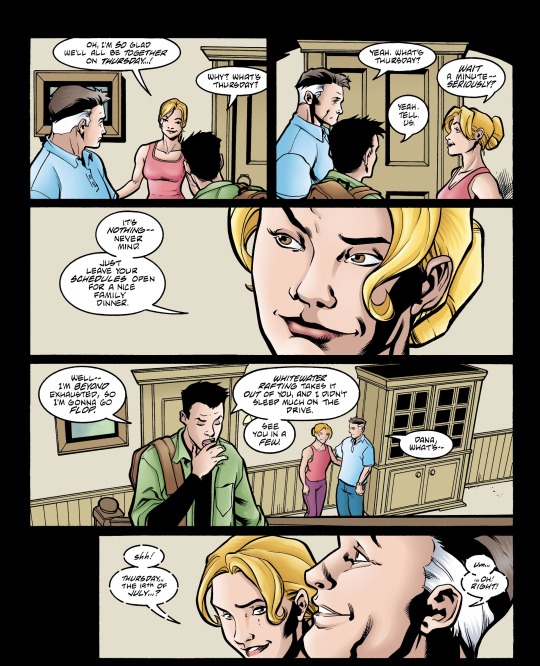
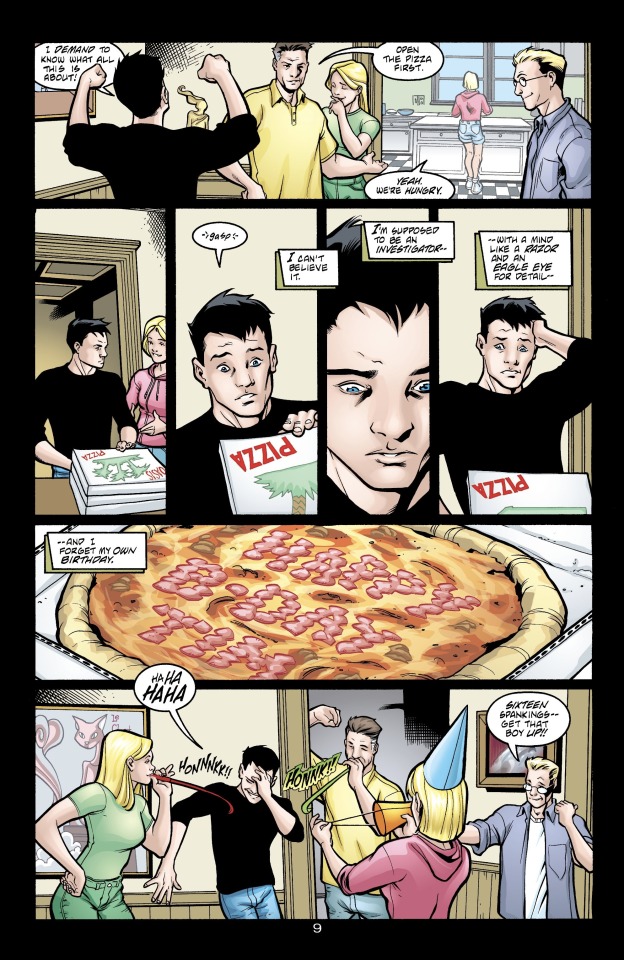
Robin Vol. 2 #116 (Sep 2003)
Jason Todd
Jason turned 18 on August 16th in Detective Comics #790 (March 2004). This is his only canon birthday.


Detective Comics #790 (Mar 2004)
In post-Crisis/preboot (1986-2011) continuity, there was a gap of six months between when Jason died and when he was resurrected (Batman Annual 25). Jason died April 27th according to his death certificates in Batman Annual 25 and Batman Files 2011, so he would’ve resurrected near late October.


Batman Annual 25 (May 2006)
So, it could be that post-resurrection Jason is biologically 6 months younger than he chronologically should be. But honestly, do we even really know what multiverse-breaking resurrection punches and then a Lazarus Pit on top of that do to someone’s body??? Either way it’s just much more simple to just use his chronological age.
Cassandra Cain
Much like Tim and Jason, Cass has only ever been given one birthdate: January 26th from Batgirl Vol. 1 #33. With that birthday, she turned 18 in Batgirl Vol. 1 #37.

Batgirl Vol. 1 #33 (Dec 2002)
When Jan 26th actually comes, Bruce suggests David Cain could’ve lied about it, but Cass denies that idea and continues to treat the day as her birthday.

Batgirl Vol. 1 #37 (Apr 2003)
Why it's likely her real birthday: Bruce initially believes Cain must’ve lied because he doesn’t think Cain could’ve known her birthday. However, we later learn Cain had lied about her origins and was actually her biological father. Batgirl v1 #62 and #73 show he was there for her birth and could absolutely know the date.
On top of that, in Batgirl #37 Cass remembers celebrating her birthday with him as a child, so he did seem to actually keep track of it. I honestly don’t see any reason to believe he’d lie (Bruce is just a jealous spoilsport).
Helena Bertinelli + Wayne
I’m combining them here because the New 52 gives me a headache.
Helena Bertinelli celebrated her birthday on February 14th in a spin-off comic from the animated Batman: The Brave and the Bold series. This is obviously not part of regular comics continuity and the characters differ from the usual comics in many ways. And yet, for reasons that will soon be clear, it’s my favorite for actually being about Helena Bertinelli the Huntress and for not being an utter mess.

Batman: The Brave and the Bold #14 (Apr 2010)
In a character profile at the end of Infinity Inc. #7 (Oct 1984), Helena Wayne’s birthday was September 7th, 1959. Calculating back from October 1984, that would make her 25 at the time.
During the New 52, Helena Bertinelli was initially portrayed as a long-dead (secretly alive but don’t worry about it) mobster’s daughter and replaced by Earth-2’s Helena Wayne who got stranded on Prime Earth. This H. Wayne stole H. Bertinelli’s identity in the form of several forged passports and IDs, which had hints toward birthdates. The question is, can we take any of those birthdates seriously, and if so, which birthdates and for which character? (Cue my headache.)
Skip ahead to Dick if overthinking fake passports sounds boring.
When comparing to a real Italian passport, the date on H. Wayne’s fake Italian passport appears to be a birthdate. Note that the fake name is Carol Bertinelli, not Helena. H. Wayne said her IDs were inspired by H. Bertinelli but clearly she’s taking liberties for the IDs so that’s a point toward these being useless for H. Bertinelli birthdays.

Huntress Vol. 3 #1 (Dec 2011)
I don’t recognize the month abbreviation as a real abbreviation, but from the visible letter O I’m going to assume it means October. If it is, then the date is 20 October 1985. Sidenote: a 1985 birthdate during 2011 could put her age at about 26, which is actually quite close to how old she could’ve been based on pre-Flashpoint! 1985 has been given as Helena Wayne’s death year before, so it’s an interesting choice of a birth year for her. (Thanks to DC’s sliding timescale, though, birth years don’t actually mean anything in the comics.)
They don’t show her complete US passport, but I can see a “22” in line where the day of the month should be for her birthdate. This already contradicts the previous passport. This one uses Helena Bertinelli’s actual name, though–does that make it more relevant than the Carol one or this all still ridiculous because of the discrepancies?

Worlds’ Finest Vol. 1 #1 (Jul 2012)
We can try to glean the US passport birth month from the passport number at the bottom. The first two digits (“12” here) indicate the agency that issued the passport. 12 means the Honolulu agency. Right after “USA” is supposed to be the birthdate plus an extra number, in the order of year/month/day with the year being the last two digits of a year. Here we encounter another problem. It says 810228. This would imply her birthdate is 1981/02/28. That’s February 28, 1981. Since the earlier line indicated her birthday fell on a 22nd, this already contradicts itself.

Interpreting a Machine Readable Zone (MZR) on a Machine Readable Travel Document (MRTD)
However, I’d bet comic writers and artists aren’t always well versed in passport numbers (it’s already a stretch for me to bother checking it…). If they put the extra digit before the birthdate instead after, and the date is formatted month/day/year (the most common format in American English, so probably their first instinct), then we can drop the first 8 and it’s 10/22/8[?] with the last digit unknown. This would put her birthday as October 22, sometime in the 1980s. The 22 matches the earlier line, the October might match the previous passport if that really did say October (but contradicts the 20th), and the 1980s year could be 1985 to match the Italian passport.
At the end of the day I’m personally just going to let Helena Bertinelli be a Valentine’s born baby and call it a day, unless/until she gets a better one in the comics. For Helena Wayne I’d easily pick September 7th.
(My question is: did they give the crossbow vigilante a Valentine’s birthday as a Cupid joke??)
Dick Grayson
Dick has probably had the most birthdays of everyone (unless Bruce has more I don’t know about). All of them have their drawbacks.
In a main comics continuity, his most popular and most recent is “the first day of spring” so probably March 20th. This comes from Robin Annual 4 when his mom says she calls him Robin because he was born on the first day of spring. That presents some problems since there are other explanations given for the origin of “Robin,” including that his mom said he was “always bobbin’ along” (Dark Victory #12, page 17) or the original inspiration of Robin Hood (Detective Comics #38, p3).
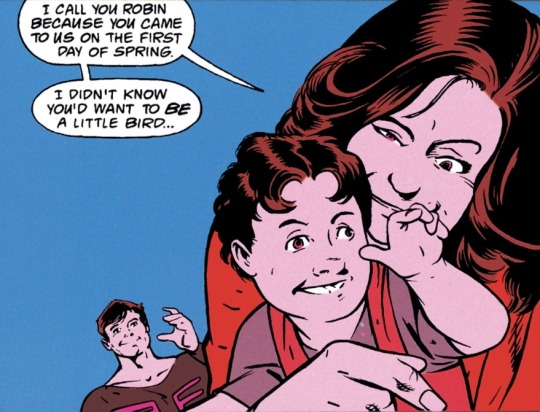
Robin Annual 4 (Jun 1995)
Before that, in Secret Origins Vol. 2 #50 (Aug 1990), Marv Wolfman wrote a version of Dick’s origins where Dick turned 10 a week before his parents died on Halloween. That would make his birthday October ~24th (presuming that “a week” before Halloween literally means 7 days here).

Secret Origins Vol. 2 #50 (Aug 1990)
The first drawback of the October birthday is that it’s tied to Dick being 10 when his parents die on Halloween. Dick’s age and the date his parents die change a lot depending on the writer (Nightwing Vol. 1 #1 says his parents died June 27th, Dark Victory #8-9 says May, etc.). The second drawback is that few people remember this version of his birthday even exists.
Dick’s birthday is November 11th in Super DC Calendar 1976. Note: Despite being a non-diegetic calendar from almost 50 years ago, this source remains well known and used among comic enthusiasts (including those working at DC). Generally, I would say it should mainly apply just to pre-Crisis continuity, but it is also useful for characters that haven’t gotten updated birthdays ever since (like Roy Harper, Barbara Gordon, or Selina Kyle, for example).
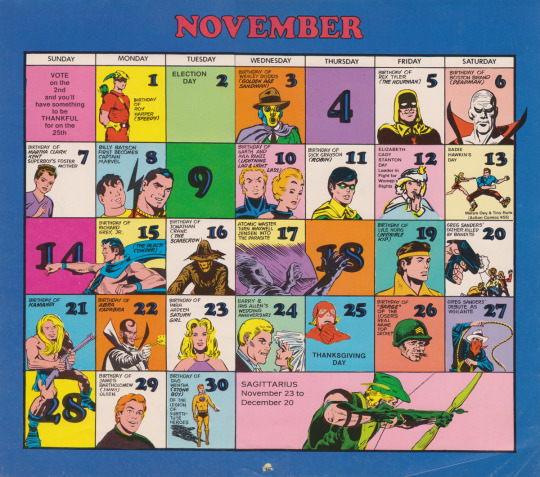
Super DC Calendar 1976
Sidenote: Since Damian doesn’t have a canon birthday, November 11th is favorite to steal for my own fan canon Damian birthday. Dick has plenty birthdays to share and I think it’s cute. @ DC, give Damian and Steph birthdays, they’ve been birthday-less for decades!
Indeed, DC writer Tim Sheridan and editor Mike Cotton debated whether Dick’s birthday was in March or November. They favored March 20th and wrote a birthday scene in Teen Titans Academy #1 (published March 23rd, 2021). The publishing time near Dick’s birthday was intentional, though the date isn’t mentioned within the comic itself.
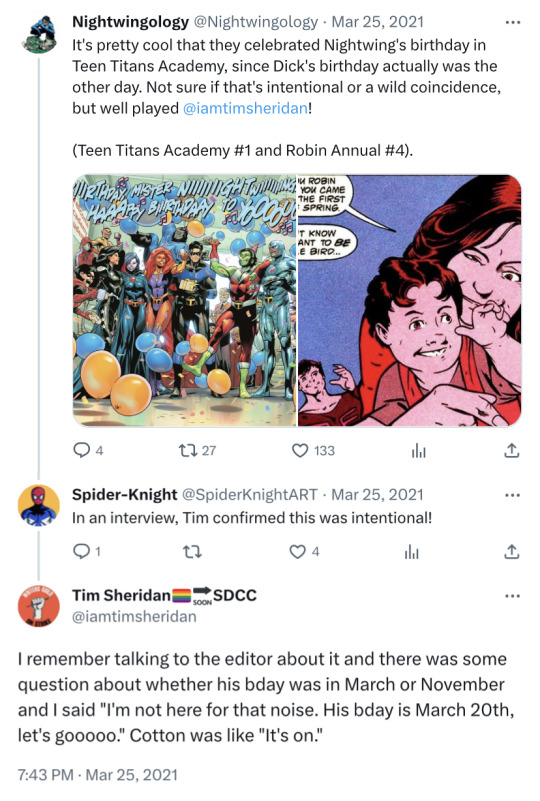
Link to tweet
The above birthdays were all meant to apply to a main comics continuity at some point. However, Earth-16, better known as the animated Young Justice universe (therefore outside of main comics continuity), says YJ Dick’s birthday is December 1st.
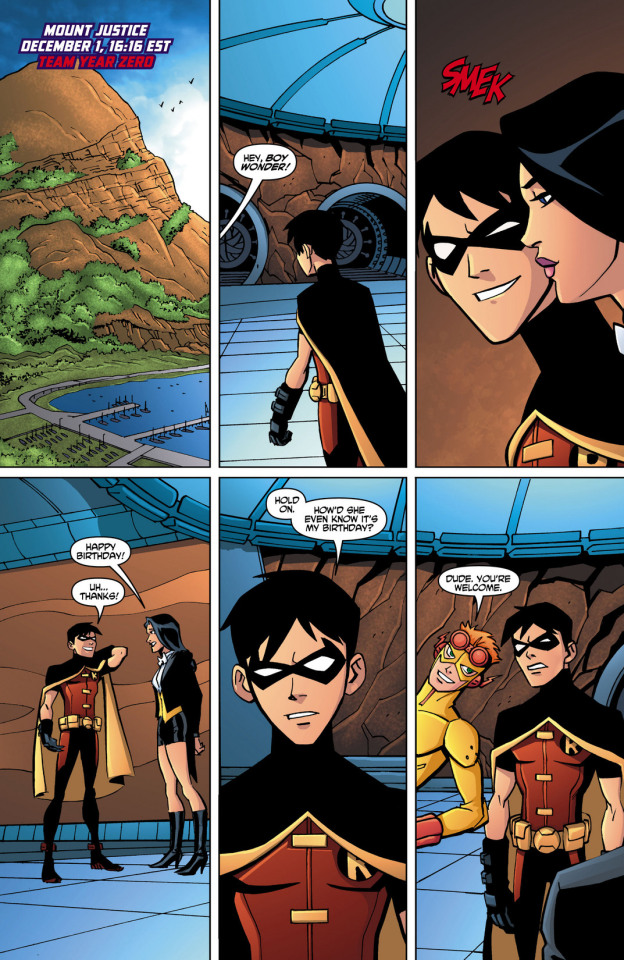
Young Justice Vol. 2 #20 (Nov 2012)
Unlike Helena Bertinelli, Dick has plenty of comics birthdays to choose from, so personally I’ll only count Dec 1st as being the birthday for YJ animated/Earth-16 Dick Grayson until or unless it’s ever mentioned to apply to main comics continuity.
Barbara Gordon
Super DC Calendar 1976 says Barbara’s birthday is September 23rd.
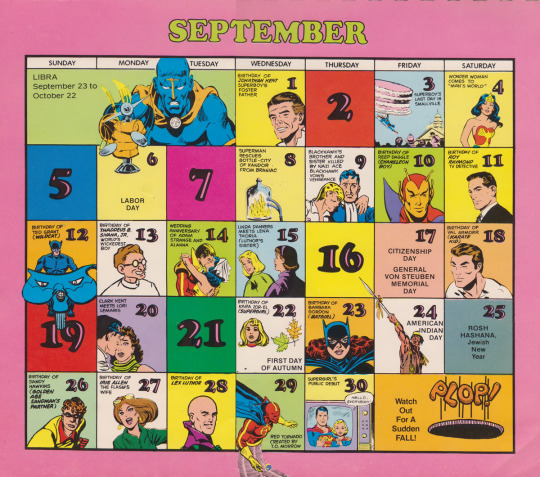
Super DC Calendar 1976
Since then, the only time I recall her birthdate hinted at is in Secret Origins #20 when her adoptive mom says her birthday is in the fall. This could support her birthday being September 23rd.
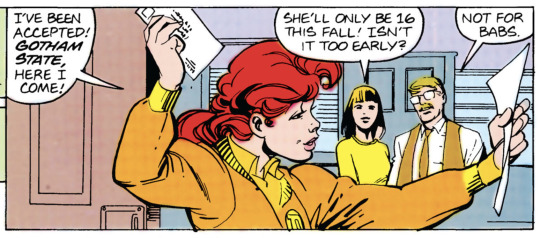
Secret Origins Vol. 2 #20 (Nov 1987)
Although she has celebrated her birthday on panel since then (the end of Nightwing Vol. 2 #153), she hasn’t been given any other actual birthdate. So I’ll keep September 23rd and call it a day.
Selina Kyle
Super DC Calendar 1976 says Selina’s birthday is March 14th. Once again, although it hasn’t been mentioned within a comic, it’s stuck around in popular consciousness (see: Catwoman actress Zoë Kravitz wishing Selina a happy birthday on March 14th).

Super DC Calendar 1976
Selina celebrated a birthday on panel in Catwoman (2002) #37 but the date was never mentioned. I don’t know of any other reference to her birthday, but my reading of Selina is thus far more sparse than my reading of the others.
Kate Kane
Kate’s birthday options all come from outside of the comics themselves.
In “An Un-Birthday Present,” season 1 episode 11 of Batwoman, a parallel version of her twin Beth had a driver’s license showing her date of birth as January 26, 1990. She and Kate later celebrated their birthdays on an episode aired Jan 26th, 2020. I don’t keep up with live action DC shows so I unfortunately can’t offer a screenshot (if anyone has one or the timestamp, please let me know!).
(I kinda wonder if somebody looked up Batwoman’s birthday for these episodes, saw Batgirl’s (Cass’s) birthday, and just ran with it. Batwoman and a Batgirl sharing a birthday is just. Ughhh.)
In 2012, one of her comic writers tweeted to choose a random date for her birthday and picked March 21st, which so far as I know has never been used as her birthday in comics.
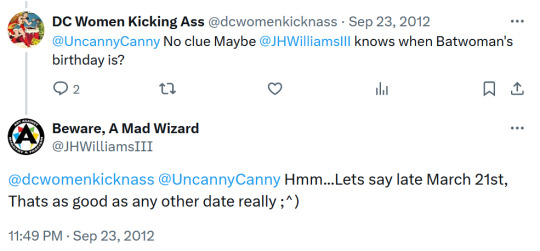
Link to tweet
Bruce Wayne
Bruce’s most popular birthday is February 19th, but his most recent one is October 7th from the digital-only comic Legends of the Dark Knight. I believe that’s the only time October 7th has been referenced, but I’ve heard the animated show The Batman said his birthday was in October (can’t confirm, haven’t watched it recently).
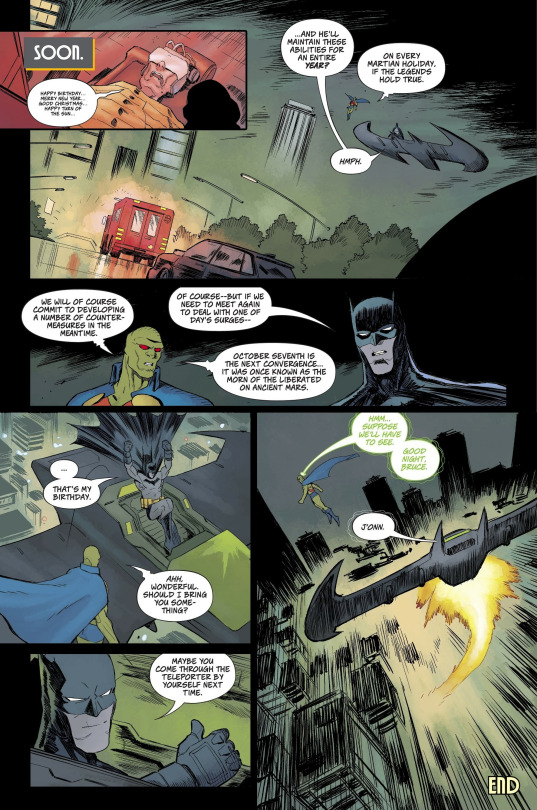
Legends of the Dark Knight #10 (Jun 2021) - Note: two pages have been combined into one for this post
Still, even associates of DC seem to remember his February 19th birthday better. In February 2023, Warner Bro’s Gotham Knights game did a sale for Bruce’s birthday. I’ve also heard the birthday was used in the Gotham TV show, but again, I don’t watch much live action DC shows.
The February 19th birthday appears to come from the 70s and 80s. It’s his birthday in the Super DC Calendar 1976, and in Batman Family Vol. 1 #11: “Suprise, Suprise!” (May 1977). Bob Rozakis (known as DC’s “Answer Man”) said Feb 19th was Bruce’s birthday in the letter column of Detective Comics #494 (Sep 1980).

Letter column of Detective Comics #494 (Sep 1980)
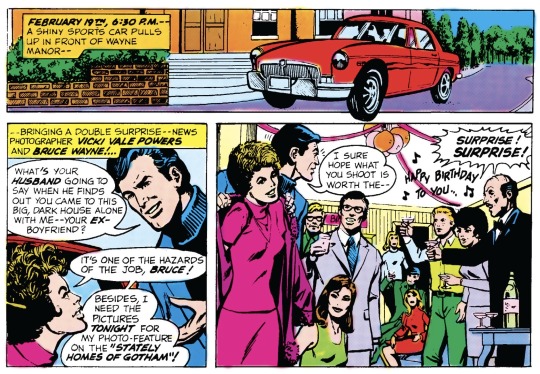
Batman Family Vol. 1 #11: “Suprise, Suprise!” (Jun 1977)
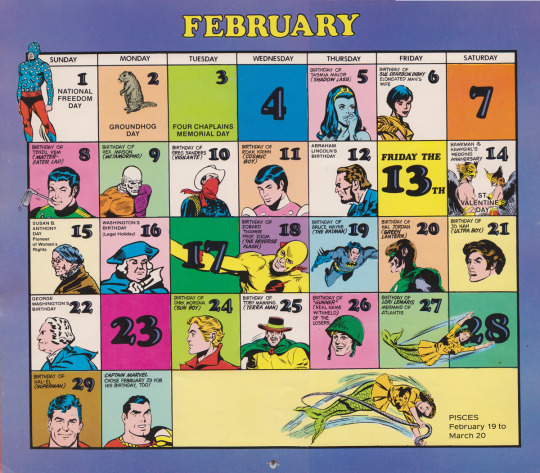
Super DC Calendar 1976
Way back in the 40s, his birthday was in April, possibly April 7th. During a birthstone murder mystery, Bruce says his birthstone is a diamond, which is traditionally the April birthstone.
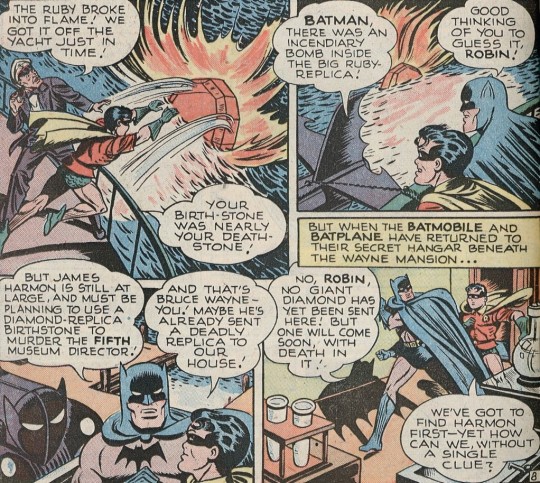
World’s Finest Comics #33/6 (Mar-Apr 1948): “The 5 Jewels of Doom!”
Star Spangled Comics #91 (Apr 1949) might imply the exact date was April 7th but we’d have to assume the party is on his birthday and that “this month” refers to the publishing month of April. I believe this is where people get the April 7th birthday when they bring it up.

Star Spangled Comics #91 (Apr 1949)
Early April also shines in Batman: Year One where it shows Bruce’s first night out as Batman being either the night of April 6th or the early morning of April 7th (Batman #405). So although the April Bruce birthday hasn’t been used in decades, it’s still a Batman birthday in a way.
I have also heard people say Frank Miller considered Bruce’s birthday to be in November. However, I have yet to find an original source of him saying that, and honestly (just like the “March 21st” birthday for Kate) if he never used it in any canon material I don’t put much weight in that.
Jim Gordon
The only birthday I’ve ever seen for Jim is January 5th from Super DC Calendar 1976.
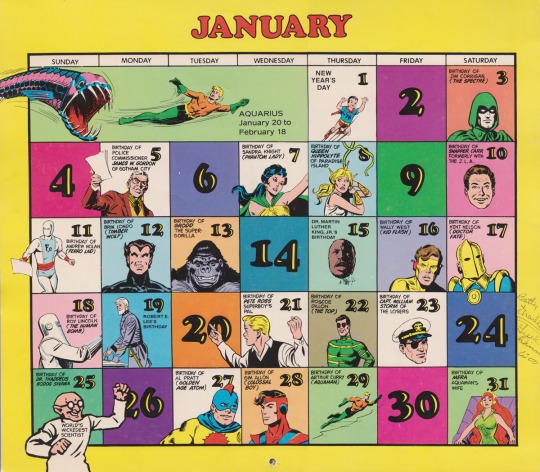
Super DC Calendar 1976
Alfred Pennyworth
Alfred’s birthday in Super DC Calendar 1976 is April 8th.
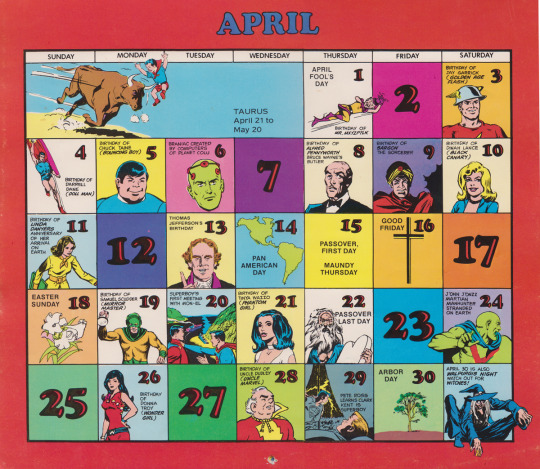
Super DC Calendar 1976
In the Injustice: Gods Among Us universe (an alternate reality where the video game of the same name is set in), they show Alfred’s birth certificate, where it says his birthday is August 16th, 1943.
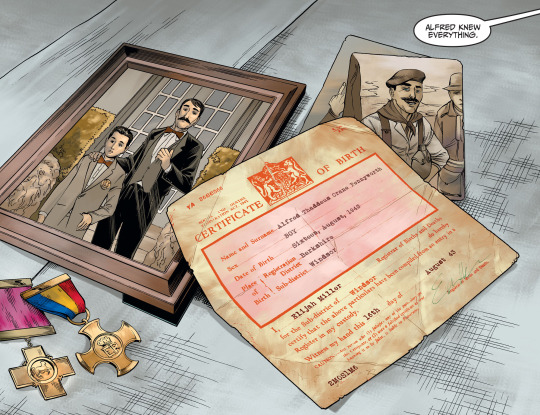
Injustice: Gods Among Us Year Five #26 (Jun 2016)
Maybe you’ll notice that August 16th is Jason’s birthday. A little funny considering the issue features Alfred refusing to share his birthday only for us to learn it’s the same date as Jason’s. Still, annoying. There are so many days in the year! Stop choosing the same ones!
This Alfred birthdate runs into a similar problem Helena’s birthdates did: it’s not part of main comics canon, it’s an alternate universe, so it may not be applicable to the main comics universe.
Note: if we calculate that 1943 birth year from Jun 2016 when the comic was published, that’d make Alfred 72 soon to be 73. Does that mean anything in canon? Probably not, but oh well. Also...token British character born by Windsor Castle? …of course.
Personally, I would rather go with the April 8th birthday than the Injustice one, since Injustice is an alternate universe. Also, outside of the humor of it, the idea of Alfred and Jason sharing a birthday is a bit too much for me. Still, it’s up to people’s own cherry picking.
Chronology
The birthdays in publishing order alongside notable reboots. A soft-reboot refers to reboots that only changed a few details with minor consequences, keeping the overall continuity mostly intact. A major reboot has significant effects on continuity (too many to list).
1935-1986: Pre-Crisis era (Golden Age begins ~1946, Silver Age runs from late 50s--early 70s)
Mar-Apr 1948: Bruce’s birthday is in April
Apr 1949: Bruce has a birthday party on the 7th of “this month”
Skipping a good three decades because I barely even know what’s in there. Sorry lol
Mid 70s to early 90s: Bronze Age era
1976: the super dc calendar says Bruce’s birthday is February 19th, Alfred’s is April 8th, Dick’s is November 11th, Babs is September 23rd, Selina’s is March 14th, Jim’s is Jan 5th
Jun 1977: Bruce celebrates his birthday on February 19th
Sep 1980: letter collumnist says Bruce’s birthday is February 19th
Oct 1984: Helena Wayne’s birthday is on September 7th, 1959
Mar 1986: the major Crisis on Infinite Earths reboot (begins post-Crisis/New Earth era, many previous comics are now considered Earth-2 instead)
Nov 1987: Babs birthday is in fall
Aug 1990: Dick turns 10 a week before Halloween (probably October ~24th)
Sep 1994: Zero Hour soft reboot (Batman and Robin become urban legends so Robin is not allowed on video, Bruce’s parents’ murderer is changed to unknown instead of Joe Chill, Selina is no longer a once-prostitute)
Apr 1995: Dick’s birthday is the first day of spring (probably March 20th)
Oct 2002: Cass learns her birthday is January 26th
April 2003: Cass turns 18 on January 26th
Sep 2003: Tim turns 16 on July 19th
Mar 2004: Jason turns 18 on August 16th
Jun 2006: Infinite Crisis soft reboot (Joe Chill is restored as the arrested Wayne family murderer, Superboy-Prime's punch retroactively resurrects Jason)
Apr 2010: In the Batman: Brave and the Bold universe, Helena Bertinelli celebrates her birthday February 14th
Oct 2011: the major Flashpoint reboot (end of post-Crisis/preboot, begins the New 52 and changes the primary universe to Prime Earth; significant character/timeline changes and erasures)
Dec 2011: Helena Wayne’s fake Carol Bertinelli passport seems to list October 20th as a birthdate
Jul 2012: Helena Wayne’s fake Helena Bertinelli passport lists some 22nd unknown month, Oct 22nd, or Feb 28th birthday
Sep 2012: Batwoman writer J.H. Williams III randomly picks Kate’s birthday as March 21st on Twitter
Nov 2012: Earth-16/YJ animated Dick Grayson celebrates his birthday on December 1st
Jun 2016: In the Injustice: Gods Among Us universe, Alfred’s birth certificate says his birthday is August 16th
Jul 2016: Rebirth reboot (restores some pre-Flashpoint continuity, some characters regain previous histories but now semi-synchronized with the New 52 era)
Jan 2020: Batwoman TV show Kate celebrates her birthday on January 26th
Mar 2021: Writer Tim Sheridan says he & his editor chose March 20th as Dick’s birthday over the November option
May 2021: Infinite Frontier holds all previous continuities as potential canon, restoring more of pre-Flashpoint
Jun 2021: Bruce says his birthday is October 7th in a digital-only comic
Feb 2023: Gotham Knights game has a sale for Bruce’s birthday
#batfamily#batfam#tim drake#dick grayson#bruce wayne#dc continuity#heroesriseandfall#cassandra cain#dc comics#jason todd#helena bertinelli#selina kyle#barbara gordon#jim gordon#alfred pennyworth
119 notes
·
View notes
Text
By: Andrew Doyle
Published: Apr 16, 2025
If the law is an ass, the culture war is a bigger one. How else can one explain the phenomenon of judges at the UK supreme court gathering to determine the definition of a ‘woman’? This landmark case was heard in November, and today the verdict has been reached: ‘The unanimous decision of this court is that the terms woman and sex in the Equality Act 2010 refer to a biological woman and biological sex’.
So there we have it. We now have confirmation that a person’s sex does not change under the Equality Act simply because he or she holds a Gender Recognition Certificate (GRC). It is curious to think that this decision could have gone either way. When the Equality Act was penned fifteen years ago, not a single legal mind in the land would have entertained the notion that its references to ‘sex’ and ‘women’ would one day cause confusion. Surely these most unambiguous of terms could not have been open to challenge?
The casual observer might have assumed that the judiciary has gone mad, but there are good reasons why this case was raised. It has come about because of the Scottish government’s view – enshrined in its guidance on the Gender Representation on Public Boards (Scotland) Act 2018 – that ‘sex’ in the Equality Act refers to ‘gender identity’ rather than, you know, an individual’s potential to produce large or small gametes. From the SNP’s perspective, anyone could be a woman so long as they hold a GRC. But this legal fiction – created in the Gender Recognition Act of 2004 – has created problems, not least that some of those so certificated now seem to believe that this should grant them access to women-only spaces.Upgrade to paid
The court’s decision could never have altered reality, of course. Human beings cannot change sex, no matter what the law says. The legal fiction of ‘gender’ has emboldened various campaign groups over the years to rewrite the law inside their own heads, which is why Stonewall was found to have been representing the law as it ‘would prefer it to be, rather than the law as it is’. As a result of this activist meddling, many organisations and even schools have been operating under the assumption that anyone who claims to be female should have access to women’s toilets and changing areas, but this has never been the case. Nor has it even been true that self-identification exists in law, in spite of claims to the contrary by genderists.
For Women Scotland was able to make this challenge because the Scottish government has a duty to comply with the Equality Act in its guidance and legislation. By arguing that a GRC could make a man a woman for the purposes of the 2018 Act, they were effectively prohibiting women from assembling without men. This is a scenario that has already been playing out in Australia, where lesbians are no longer permitted to hold female-only events, because to exclude any man who believes himself to be a woman would be illegal discrimination. In the recent case of Sall Grover, we even had a judge ruling that ‘sex is changeable’. Reader: it isn’t.
For those in any doubt at the absurdity of this debate, here is an excerpt from the submission by Scottish Lesbians, The Lesbian Project and LGB Alliance:
‘It barely needs stating that lesbians are females who are sexually orientated to the bodies of other females. Again, it barely needs stating that there are anatomical differences between males and females. The defining characteristic of a lesbian is that she is not sexually attracted to male bodies, including penises, testicles, male body mass and shape. Nor is she sexually attracted to certificates.’
Anyone seriously attempting to argue against this is irretrievably detached from reality.
The task of the supreme court was interpretative, and their interpretations of the Gender Recognition Act and the Equality Act should settle many of the more frustrating debates of our times. Ultimately, that we have reached this point at all tells us all we need to know about the careening lunacy of the culture wars. Such has been the power of activists that they have been able to reduce the judiciary to a laughing stock. Their war on women has also been a war on language and reality, and the fact that even the highest judges in the land have been dragooned into the fray is some indication of the extent of their power.
It is reassuring that the supreme court eventually settled on the side of reality, but this war will doubtless continue to rage. Activists have made clear that they consider the law an enemy, and this ruling will not change that. In this most deranging of times, it is worth reiterating the basic facts. No human being has ever changed sex. Men cannot become women and women cannot become men. Trans women are, by definition, male. Trans men are, by definition, female. There is no such thing as a ‘trans child’. ‘Non-binary’ is a fashionable form of self-classification, not an inherent characteristic worthy of protection in law. These are facts that will not bend according to the whims of those who wish to run roughshod over the rights of women and gay people.
Men who wave their GRCs around like magic wands and believe that it transforms them into lesbians are deluded. Thank goodness the judges understood this incontestable truth.
#Andrew Doyle#biological sex#sex binary#sex is binary#woman#man#what is a woman#what is a man#gender identity#gender nonsense#gender pseudoscience#Gender Recognition Act#Equality Act#biology#human biology#biology denial#biology denialism#religion is a mental illness
12 notes
·
View notes
Text
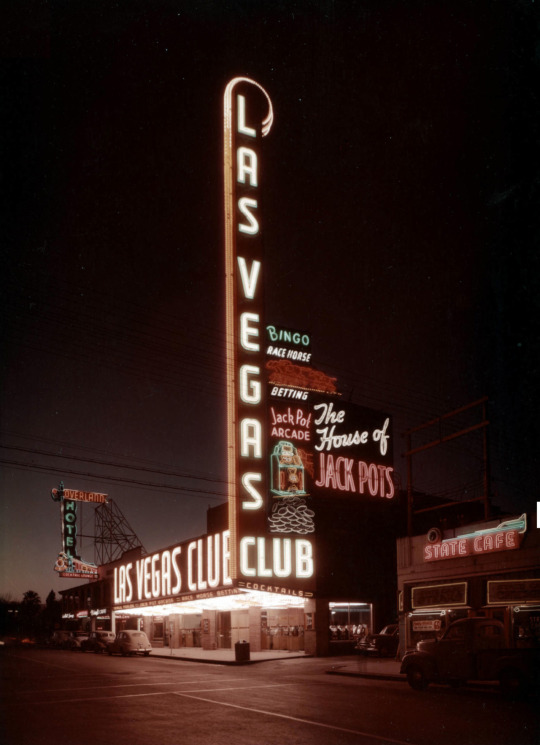
Las Vegas Club – 18 Fremont St. (1949-2018)
Forty years after opening, Las Vegas Club relocated from its original 21-23 Fremont location, across the street into the Ed W. Clark Building (18 Fremont) and part of Overland Hotel (2 Fremont). This timeline covers the original construction of 18 Fremont to the demolition of Las Vegas Club.
'22: Sep., Ed W. Clark Building opened, 14-18 Fremont. Ground floor occupied by the first JC Penney in Las Vegas; law offices on the second floor.
'32: Apr., Sprouse-Reitz on the ground floor. (Age 3/13/32)
'38: Jan., Sears-Roebuck on the ground floor. (Age 11/26/37)
'45: Cut Rate Drugs on the ground floor, through Nov. '46.
'46: Dec., Save Rite Drug on the ground floor.
'49: Mar. 31, Las Vegas Club opens in 18 Fremont and part of Overland Hotel (RJ 3/29/49, 3/31/49). L.B. Tutor Scherer, Arthur Schellang and/or a partnership with others including Joe Hall, Vic Hall, Frank Edds, and others are licensed for gaming at the club from Mar. '49 through Oct. '60.
'49: Jun. Las Vegas Club and “House of Jackpots” signs construction by YESCO. The “L” atop the sign is unfinished until Aug. The sign is “powered by its own power plant … larger than some which generate electricity for entire communities.” (RJ 6/16/49, RJ 7/26/49, RJ 8/28/49)
'51: Oct., The “one-armed bandit” character slot machines debuted at Las Vegas Club.
'53, Oct. 15: Customer Dale Lee Sollars, drunk, underage, and recently released from the mental ward of a military hospital in TX, shoots and kills another customer Lester Thomas, and paralyzes waitress Jean McColl.
'54: Jul., Remodeled “House of Jackpots” casino.
'55: Apr., Schellang dead, suicide.
'57: Aug. 19, Scherer died, after suffering a stroke in Jul.
'57: Expansion to Main St. using the ground floor of Overland Hotel. Biff’s restaurant opens in Oct. (RJ 10/13/57) J. Kell Houssels is 15% owner; Biff’s operator W.W. Naylor is 5% owner. (City minutes 9/4/57)
'58: Chatterbox bar opened in the Overland Hotel portion of Las Vegas Club.
'58: Nov. 5, Las Vegas city council bans female casino dealers, arguing they undercut men’s wages by working for less. At the city council meeting that day Las Vegas Club dealer Rita Hansen says she’s worked for a year and a half for normal wage of $22.50/day.
'60: Jun. 31, Casino closed, Overland still open. (RJ 7/1/60).
'61: Feb. 1, New owners Jackie Gaughan, Mel Exber, Harry Hezzelwood reopen the casino.
'62: Casino owners purchase Overland hotel and adjacent property, plan a high-rise hotel. Overland named used until c. '65.
'69: Dugout restaurant replaces Biff's, marquee sign changed. Las Vegas Club sign painted blue.
'77: A complete rebuild of Las Vegas Club begins late in the year. Overland Hotel building (2 Fremont) and Clark building (18 Fremont) will both be demolished, a new casino constructed, with signs by YESCO. Las Vegas Club continues operations full time from a partial or temporary casino throughout. Work is described and photographed in RJ 12/27/77, RJ 3/9/78, RJ 4/27/78, RJ 12/3/78. Second major phase in ’80 will be the high rise hotel tower.
'79: New casino and facade completed circa Feb.–Mar.
'80: Jun., completion of 14-story, 224 hotel tower. (RJ 6/29/80, RJ 7/4/80)
'96: second 16-fl. tower.
2004: Mar. 26, Las Vegas Club is sold along with other Gaughan-Exber properties to Barrick Gaming and Tamares Real Estate. (RJ 3/26/2004)
2015: Las Vegas Club sold to Greg and Derek Stevens on Aug. 14, and closed Aug. 20.
2018: Las Vegas Club demolished; replaced by Circa Las Vegas.
Headline photo: Unknown photographer, likely Las Vegas News Bureau. L. F. Manis Photograph Collection (PH-00100) UNLV Special Collections & Archives.




Construction of the sign, 1949. Young Electric Sign Company (YESCO) Corporate Records (MS-00403), UNLV Special Collections & Archives.

Las Vegas Club expanded to the corner of Main St in '57. Biff's restaurant, operated by W. W. "Tiny" Naylor. Photo – '59, Underwood Archives.

In '69, The Dugout restaurant (far corner) replaced Biff's. A red facade wall was added behind the sign in front of the building. The Overland Hotel rooftop sign was changed to read "Las Vegas Club, Hotel." The main Las Vegas Club sign was painted blue. Photo: Apr. '71, Vintage Las Vegas collection.

Jan. '78 – A slide captioned, "Las Vegas Club, demolished." Fayle Family Photographs (PH-00113), UNLV Special Collections & Archives via Neon Bible.

The new casino building completed in '79, designed to look like a baseball stadium. The hotel tower (left) was completed in '80.
Timeline sources include: Sprouse-Reitz 1c to 49c Will Enter Las Vegas. Las Vegas Age, 3/13/32; Sears, Roebuck To Open Store. Las Vegas Age, 11/26/37; Sears, Roebuck Will Open Soon. Las Vegas Age, 1/7/38; Alley Oop! Review-Journal, 6/16/49 p3; Here's Why the L Isnt' In that Pesky Casino Sign. Review-Journal, 7/26/49 p1; L of a sign. Review-Journal, 8/28/49 p1; Las Vegas Club Holds First Grand Opening. Review-Journal, 7/16/54 p9; Club’s Closure Eyed as Move in Expansion. Review-Journal, 7/1/60; Part Owner. Review-Journal, 2/1/61 p11; $6 Million Project Seen at Site of Old Hotel. Review-Journal, 5/16/62 p4; Huge renovation project begins at Las Vegas Club. Review-Journal, 12/27/77; Renovation. Review-Journal, 3/9/78; Vegas club open new casino door. Review-Journal, 4/27/78; On the rise. Review-Journal, 12/3/78; Mark Dent. Downtown casinos look to new era. Review-Journal, 6/29/80; First Pitch. Review-Journal, 7/4/80; Rod Smith. Four Gaughan casinos pass to Barrick. Review-Journal, 3/26/2004.
53 notes
·
View notes